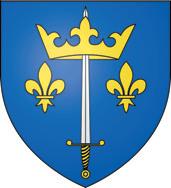

THE R ECORD Benedict XVI appeals for end to war, forgotten crises
Speaking to the whole world,
Pope says Christmas message of peace is sorely needed
■ By John ThavisVATICAN CITY (CNS) - Pope Benedict XVI welcomed Christmas as a “day of great hope” and said its message of peace is sorely needed in a world beset by war, poverty and injustice.
In his Christmas day blessing delivered from the balcony of St Peter’s Basilica, the pope appealed for an end to “the grim sound of arms” in Iraq, the Middle East, Afghanistan, Sudan’s Darfur and other “crisis situations that are frequently forgotten.”
“May the child Jesus bring relief to those who are suffering and may he bestow upon political leaders the wisdom and courage to seek and find humane, just and lasting solutions,” he said.
The night before, celebrating midnight Mass in St Peter’s Basilica, the Pope said Christmas should be experienced as a feast of “restored creation” in a spoiled and polluted world.
That will happen when modern men and women make time and space for God, he said.
The papal Mass and blessing were broadcast live to millions of people around the world, and the Pope pronounced Christmas greetings in 63 languages - including for the first time Guarani, an indigenous language of South America.
In English, the Pope said: “May the birth of the Prince of Peace remind the world where its true happiness lies; and may your hearts be filled with hope and joy, for the Savior has been born for us.”
In the message accompanying his “urbi et orbi” blessing to the city of Rome and to the world, the pope emphasized that Christ’s gift of hope and salvation is offered to all peoples, especially those suffering from oppression and lack of basic rights.
“It is the most vulnerable members of society - women, children, the elderly
Continued - Page 8
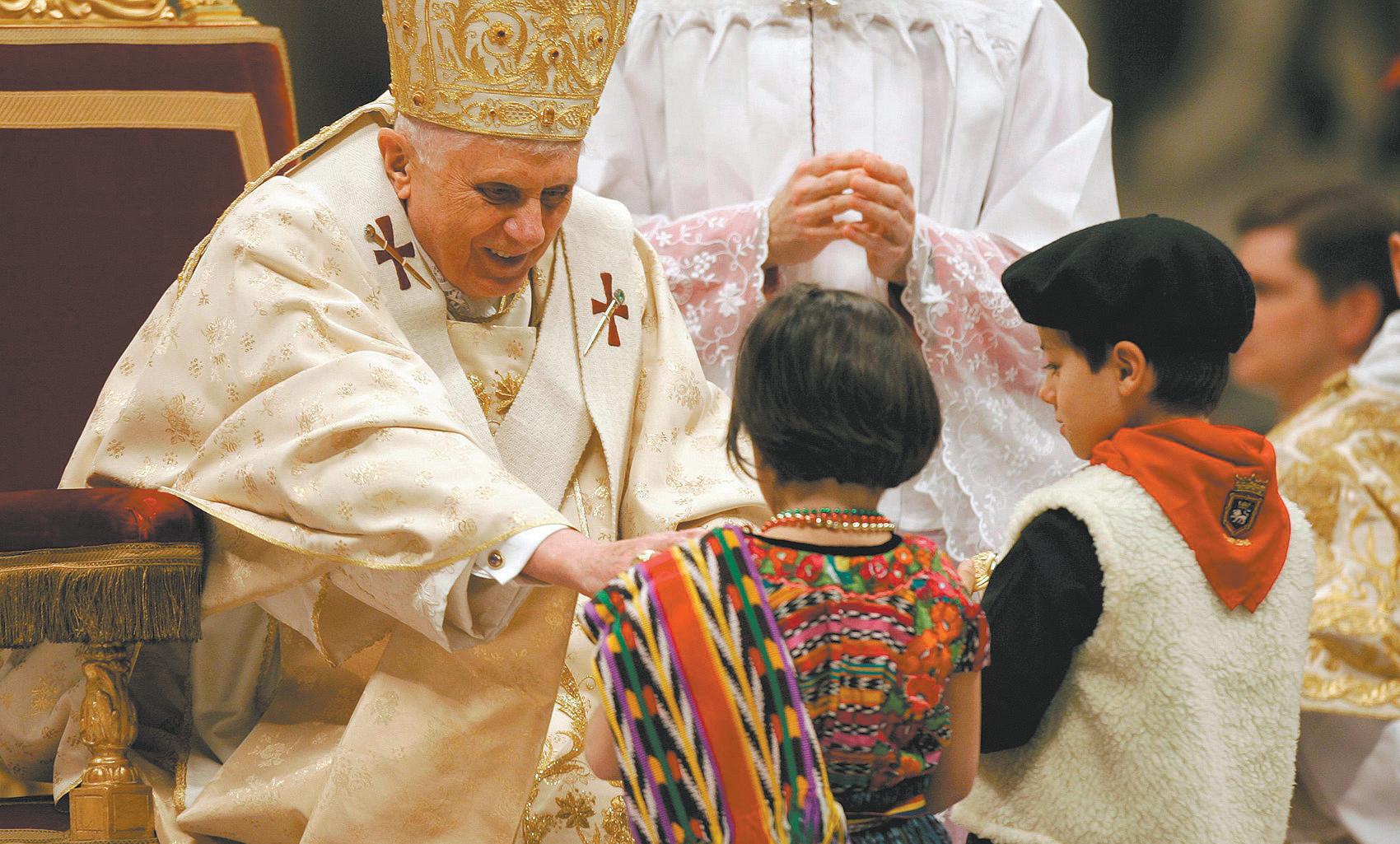
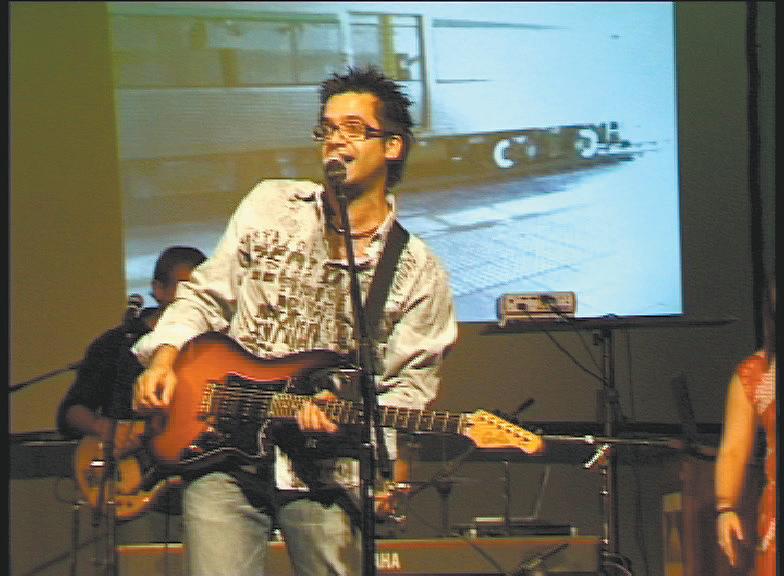
CRUNCH TIME FOR THE JESUITS
After 25 years one of the Church’s most revered religious orders - the Society of Jesus - is about to choose a new leader and chart a course for the early years of the Twenty First Century. The world’s Jesuits must take key decisions for the Society’s future, as OSV’s RUSSELL SHAW and The Record’s PAUL GRAY report.
VISTA 1-4
■ By Anthony Barich
Perth’s biggest Catholic music event, Goliath, is set to descend on the world’s Catholics at World Youth Day in Sydney from July 15-20.
The Archdiocese of Perth’s WYD Office sent in a comprehensive proposal called “Goliath Goes To Sydney” that will see Perth’s finest musicians showcase their talent and rub shoul-
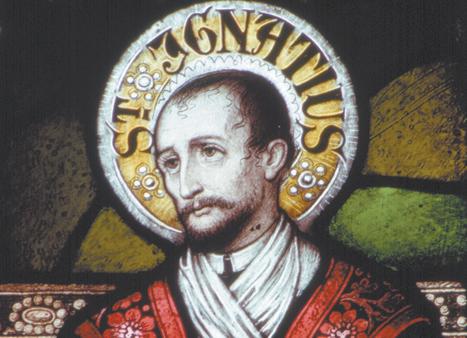
GOING
ders with their Archbishop Barry Hickey and his Auxiliary Bishop Donald Sproxton, who will address the biggest event to hit Australian shores, including the Olympics. Last year, Goliath showcased everything from rock to Blues and Roots to progressive metal. Perth Catholic musicians Ben Sheridan and Jeff Ramage, who have released a Continued - Page 8
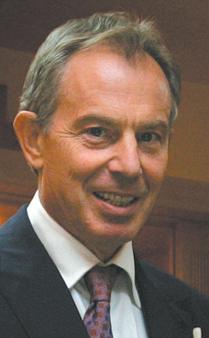









1.5 million turn out for traditional family
Well-being
■ By
Carol Glatzsays
VATICAN CITY (CNS) - The well-being of individuals and society depends on healthy families, Pope Benedict XVI said on the feast of the Holy Family of Jesus, Mary and Joseph.
“It is worthwhile to work for the family and marriage because it is worthwhile to work for the human being, the most precious being created by God,” he said in his December 30 Angelus address in St Peter’s Square.
The pope’s message - given in Italian and Spanish - was broadcast live via satellite-television linkup to a rally of more than 1.5 million people in Madrid, Spain, supporting traditional families.
“I invite Christian families to experience the loving presence of the Lord in their life,” the pope said in Spanish. He encouraged them to “pay witness before the world to the beauty of human love, marriage and the family.”
Pope Benedict said God made the institution of the family holy when he showed he wanted “to be born of a woman, the holy Virgin, and come into this world the same way all people” are born.
In a Christian home, a wife and husband find their proper vocation “in being witnesses of the faith and love of Christ to one another and to their children,” he said, quoting from “Lumen Gentium,” the Second Vatican Council’s Dogmatic Constitution on the Church.
“The good of the person and society is intimately linked to the ‘healthy condition’ of the family,” he said, citing “Gaudium et Spes,” the Pastoral Constitution on the Church in the Modern World from Vatican II. He said the fam-

ily, which is “founded on the indissoluble union between a man and woman, represents the privileged
in brief
beginning to its natural end.” “For
Vatican to clarify Latin Mass document
The Vatican will soon issue a new document clarifying the terms of Summum Pontificum, Cardinal Tarcisio Bertone has revealed.
for Divine Worship - have energetically criticised bishops who have failed to accept the papal directive.
Cardinal Bertone took a more conciliatory approach to the disputes that have arisen in the aftermath of the Pope’s move to restore the traditional Mass. The Italian prelate told Famiglia Cristiana that had been widely misinterpreted, and the new instruction from the Ecclesia Dei commission would attempt to clear up misconceptions.
moral values that give dignity to human existence,” he said.
The Madrid rally to support Christian families was promoted by Cardinal Antonio Rouca Varela of Madrid and his archdiocese. Kiko Arguello, founder of the Neocatechumenal Way, organised the event with a variety of church movements and communities.
Arguello told Vatican Radio on December 29 that the traditional family in Europe is under “mortal attack.”
Divorce proceedings have been eased in some countries, including Spain, which passed a bill in 2005 reducing the waiting time before a divorce is granted from at least a year to between three and six months.
He said since the “divorceexpress” measure came into force in Spain, “in six months, 100,000 families have separated and divorce has risen 75 per cent.”
“Christian families need support because we are a minority; we are in a very serious situation” of broken families and people ending up alone in their old age, he said.
Since the Socialist party won elections in 2004, Spain’s Parliament also has approved a bill allowing same-sex couples to marry and adopt children.
Arguello told Vatican Radio that the rally was “a big party” and celebration with no political or “polemical” motivations. Spain’s general elections are more than two months away.
Speaking out: People attend a Catholic rally in support of the traditional family in Madrid, Spain, on December 30. Organisers said that more than 1.5 million people attended the rally, which was addressed by Pope Benedict XVI in a live video link. CNS PHOTO/ANDREA COMAS, REUTERS.
instruction from Ecclesia Dei will appear within a matter of days; others have said that it could be several weeks before it is published.
Castro visit
Cardinal Tarcisio Bertone, the Vatican Secretary of State, plans to visit Cuba in 2008 and hopes to meet with acting president Raul Castro.

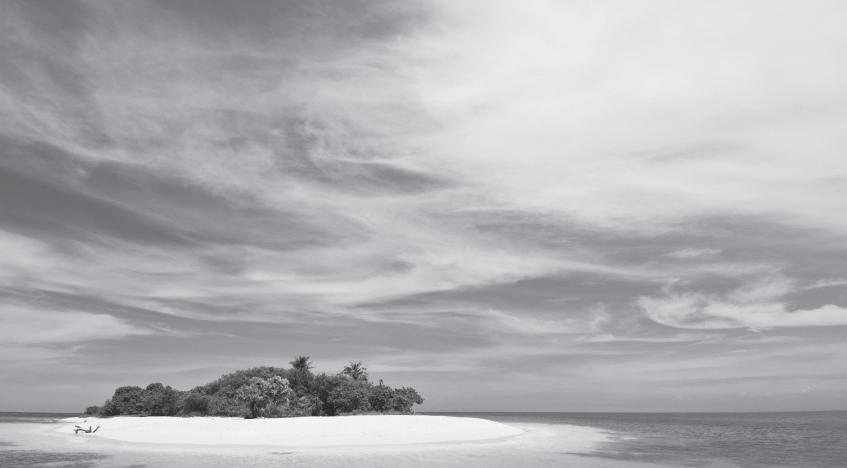

Confirming reports that have circulated around Rome in recent weeks, the Vatican Secretary of State told the Italian weekly Famiglia Cristiana that the Ecclesia Dei commission will issue instructions to “clarify the criteria for the application of the motu proprio” in which Pope Benedict XVI broadened access to the traditional Latin Mass.
Cardinal Bertone said that the new document was needed because there have been some “confused reactions” to the motu proprio. In fact some Vatican officials - most notably Archbishop Malcolm Ranjith, the secretary of the Congregation
“Some people have charged that the Pope was rejecting the Council’s [Vatican II] teaching,” Cardinal Bertone told the Italian magazine, emphasising that this interpretation is completely unfounded.
At the same time, he also dismissed the theory that Pope Benedict hopes to replace the Novus Ordo Mass, making the “extraordinary form” the single liturgical usage of the future.
That is equally inaccurate, the cardinal said.
Cardinal Bertone did not indicate when the new liturgical directive would appear. Some Vatican-watchers believe that the
In an interview with the Italian weekly Famiglia Cristiana, of which excerpts were made public on December 29, Cardinal Bertone referred only to his plans to meet with Raul Castro. He did not indicate whether or not he will attempt to speak with Fidel Castro, who has been seriously ill.
Cardinal Bertone will travel to Cuba in February, to take part in ceremonies marking the 10th anniversary of the visit by Pope John Paul II. The Italian prelate will be the highest-ranking Catholic official to travel to Cuba since the historic papal triP.
Dismayed locals shy away from Bethlehem

Bethlehem is full with foreign tourists, but without local families
■ By Judith SudilovskyBethlehem was heady with tourists on Christmas Eve as some, maps and cameras in hand, walked from the Israeli checkpoint at Rachel’s Tomb to Nativity Square while others arrived in lumbering tour buses and private taxis.
A Christmas tree twinkled brightly with coloured lights through the front window of the Paradise Hotel, which some six years ago had been destroyed in fighting between Palestinian militants and Israeli soldiers during the intifada. The parking spaces in front of the hotel, as in front of the other city hotels, were full.
The reception clerks were smiling at the luxury Intercontinental Hotel, built just before the second Palestinian uprising in 2000 next to Rachel’s Tomb and empty for many years. All 200 rooms were booked for Christmas and New Years - compared to only 10 rooms last year.
According to the Palestinian Tourist Information Center, all the hotels in Bethlehem were booked for the holiday as the relative quiet in the region and the first tentative steps in the renewal of peace talks brought tourists back after a long hiatus.
More than 60 percent of Bethlehem’s population depends on tourism for its livelihood and the intifada and the years following have left the city in economic straits. But this year even the weather seemed to be cooperating. The air was clear and crisp as the Christmas visitors wandered throughout the city on
their way to Nativity Square. Israel estimated about 20,000 tourists and pilgrims would cross over the checkpoint from Jerusalem to Bethlehem - double the number from last year. Bethlehem Mayor Victor Batarseh said earlier he expected approximately 65,000 visitors to come to the city.
Smiles were common in souvenir shops bordering Nativity Square as owners did business with customers from Korea, Sweden, Spain, the US, India and Switzerland.
“It is better than last year - better than the last few years, so of course we feel happy,” said Mary Giacaman, a Christian whose family owns the Holy Land Arts Museum souvenir store. She said most of the customers were buying olive-wood Nativity sets and Christmas ornaments.
But she noted that the crowd on the square was mostly bands of young Palestinian men.
Esam and Suha Farah, Christian Arabs from the Israeli Arab city of Nazareth, brought their 5-yearold twins, Mira and Zuher, to Bethlehem for Christmas. It was their first visit to Jesus’ birthplace.
“You don’t see any families here,” noted Esam, 41. “In Nazareth the celebrations are filled with families. Where are the local Christians? I don’t think people want to celebrate. You can tell people are frustrated by looking at their eyes. It should be bombastic here. For me the spirit of Christmas should be something else.” He said the 25-foot-tall Israeli separation wall surrounding the city has left the city feeling like a prison. Israel says the 400-mile cement and barbed-wire West Bank barrier has proven its effectiveness against terrorist attacks.
“There is nothing to do here,” said Suha, 30, who added that she had planned on staying in Bethlehem longer but would be returning to Nazareth on Christmas Day. “We like it because of the church but tomorrow we will go to be with my
family.” One local Christian noted there was almost no one from his community at the Nativity Square festivities.
“It is full of people not from Bethlehem. It is not our Christmas anymore. It is not comfortable for us to walk here,” said Rania Abdel Nour, another local and one of the few Catholics who came to visit Nativity Square. As midnight approached, she, her husband and daughter planned to go to Bethlehem University where many local Catholics were gathering for midnight Mass. On stage at the square entertainers kept the crowd in good spirits, and conga lines of exuberant young Palestinian men in colourful party hats wound their
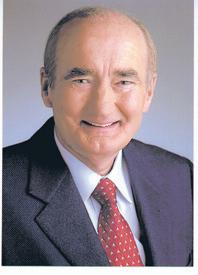
way among the celebrants several times throughout the evening. Hani Mussa, a Muslim from Ramallah, said he and his family made the trip to Bethlehem to share in the Christian holiday as they have been doing every year.
“There is no difference between us and the Christians. We want to share in their celebration,” he said.
Scores of people stood behind police barriers outside the Church of the Nativity waiting to enter for Mass. Teresa Pilien, 35, a foreign worker from the Philippines living
JohnHughes
in Israel for the past three years was eager to get in to pray at the birthplace of Jesus on Christmas.
In years past migrant workers like Pilien were the only foreigners who ventured into Bethlehem for Christmas; now she had to jostle for her spot. More than Christmas spirit, there seemed to be Palestinian pride in the city, said Shelley Burke, a 19-year-old Catholic from Father Serra Parish outside Los Angeles who came to Bethlehem from Amman, Jordan, where she is studying for a year.
People were very friendly, she said, noting that she and her friend were invited to a meal by a local Christian woman whom they had just met. CNS
I’m John Hughes, WA’s most trusted car dealer
Is it true that when people come to do business with me, they will be treated with courtesy, sincerity, professionalism and efficiency?
Is it true that “I want your business and I’m prepared to pay for it” and “I stand behind every car I sell”.
Is it true that I have over 40 technicians who are dedicated to getting my used cars in first class condition before sale?
Is it true that most of my sales are not from direct advertising but personal recommendation, repeat business and reputation?
Is it true I have my own finance company to assist good people with poor credit to buy cars from me?
Is it true I sell over 1,300 vehicles every month in Victoria Park and that is the biggest number from any one location in Australia?
Is it true that I have a warehouse selling cars under $10,000 and that I offer a full money back guarantee within one week?

Concerns as Blair joins the flock
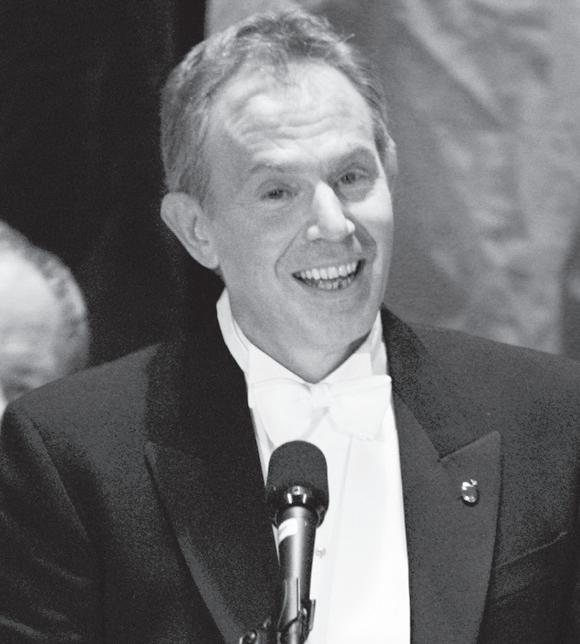 ■ By Simon Caldwell
■ By Simon Caldwell
Concerns have been raised in pro-life quarters after former British Prime Minister Tony Blair became a Catholic during a private ceremony in London.
Blair, previously an Anglican, was received into full communion with the Catholic Church by Cardinal Cormac Murphy-O’Connor of Westminster. Blair was sponsored at the Mass of reception by his wife, Cherie, a Catholic.
The December 21 Mass at Archbishop’s House, the Cardinal’s private residence, was attended by Blair’s family and close friends. Cardinal Murphy-O’Connor said in
a statement on December 22 that he was “very glad” to welcome Blair into church. “For a long time he has been a regular worshipper at Mass with his family and in recent months he has been following a program of formation to prepare for his reception into full communion,” the cardinal said. “My prayers are with him, his wife and family at this joyful moment in their journey of faith together.”
Blair, 54, served as British Prime Minister from May 1997 until June 2007. He now serves as envoy to the Middle East for the Quartet, a group comprised of the United Nations, the European Union, the United States and Russia.
He was admitted into the church using the liturgical rite of reception of a baptised Christian, which involved him making a profession of faith during the course of the Mass. He was given doctrinal and spiritual preparation by Msgr. Mark O’ Toole, the cardinal’s private secretary, and also made a full confession before his reception.
For most of his adult life, Blair has attended Mass each Sunday with his wife. Their four children - Euan, Nicky, Kathryn and Leo - were baptized in the Catholic Church and raised as Catholics.
In a Dec. 23 interview with the British Broadcasting Corp. Radio
2 “Good Morning Sunday” program, Cardinal Murphy-O’Connor described the Mass of reception as “very intimate, very prayerful.”
“It was a very moving occasion,” said the cardinal. “I suppose for him (it was) the end of a process, in the sense that he’s been thinking about becoming a Catholic for a long time.
“But also, in another sense it’s a beginning, because when you become a Catholic, as so many people who have become Catholics have said to me, it’s like coming home,” he said.
“This was a gift for Tony, a personal journey, a gift for his family,” he said, adding that Blair became a Catholic “partly because of the example of his family.”
“I think also it’s not just in his travels as prime minister, but even before that, there was something he said to me, that he feels at home in the Catholic Church in a way that he didn’t in any other church or in the Anglican commune,” the cardinal added.
At the Vatican, a spokesman expressed “joy and respect” at Blair’s decision.
“The Catholic Church joins in the sentiments of satisfaction expressed by Cardinal Murphy O’Connor,” the spokesman, Jesuit Father Federico Lombardi, said.
Father Lombardi said the Church was happy to welcome such a “prominent personality”, emphasising that Blair’s decision was not an impulsive one, but came at the end of a “long and profound journey of faith.”
Some Catholics and pro-life groups questioned the sincerity of Blair’s profession of faith in view of a political career in which he consistently voted for abortion rights.
John Smeaton, director of the Society for the Protection of Unborn Children, said in a December 22 statement that he found Blair’s decision to become a Catholic “decidedly strange.” “We are very concerned,” said Smeaton, a Catholic. “During his premiership, Tony Blair became one of the world’s most significant architects of the culture of death: promoting abortion, experiments on human embryos - including on cloned human embryosand euthanasia by neglect.
“We are writing to Tony Blair to ask him whether he has repented of the anti-life positions he has so openly advocated throughout his political career,” he said.
Ann Widdecombe, a Conservative Party member of Parliament and a former Anglican who became Catholic in the early 1990s, told CNS on December 24 that the Church would not have accepted Blair unless he assented to all its teaching on faith and morals.
Even before he became prime minister there was speculation that he was about to become a Catholic. In the mid-1990s, the late Cardinal George Basil Hume of Westminster wrote to Blair to ask him to stop receiving Communion in the Catholic parish of St Joan of Arc near his home in north London.
When Blair moved to Downing Street, he continued to worship with his family but at nearby Westminster Cathedral. The onset of the war on terror following the September 11, 2001, terrorist attacks meant it was dangerous for him to attend public services. Masses were then celebrated at Downing Street by Father Michael Seed, a Franciscan Friar of the Atonement, who renewed speculation over Blair’s conversion earlier this year when he told a journalist that Blair was “practically a Catholic.” Speculation intensified again after Blair accepted an invitation from New York Cardinal Edward M. Egan to be the guest speaker at the Alfred E. Smith Memorial Dinner in October.
As Prime Minister, however, Blair’s policies often brought him into conflict Catholic leaders. Scottish Cardinal Thomas Winning of Glasgow publicly criticized him over his voting record on abortion.


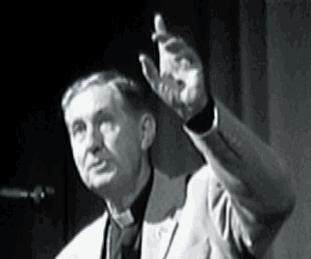
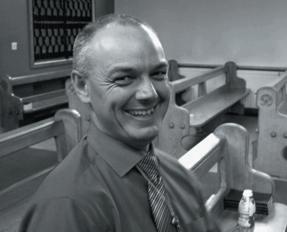

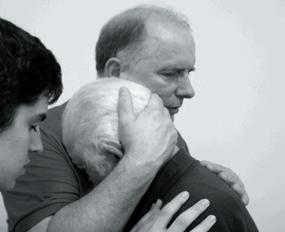



“He would have had to change his mind” on matters such as abortion, said Widdecombe. “But I think he should now make that public for the avoidance of doubt.”
Blair was just 42 years old when he swept to power in a landslide election to become the youngest prime minister since 1812. His 10 years of office made him the Labor Party’s longest-serving prime minister and the only one to lead the Labor Party to three consecutive general election victories.
Blair was also said to have endured a frosty 15-minute meeting with Pope John Paul II in February 2003, less than a month before British troops joined a US-led invasion of Iraq. At that meeting, the pope warned him that a war would disturb the whole Middle East and exacerbate tensions.
Blair returned to the Vatican in June, just weeks before he stepped down both as prime minister and a member of Parliament, for a meeting with Pope Benedict XVI.
Britain has never had a Catholic Prime Minister, although there is no constitutional barrier to such a move. CNS





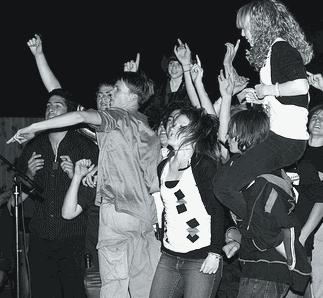






UK in Focus

By golly, the Catholics are taking over

Roman Catholics have overtaken Anglicans as the country’s dominant religious group. More people attend Mass every Sunday than worship with the Church of England, figures seen by The Sunday Telegraph show.
This means that the established Church has lost its place as the nation’s most popular Christian denomination after more than four centuries of unrivalled influence following the Reformation.
Late last year, leading figures gave warning that the Church of England could become a minority faith and that the findings should act as a wake-up call.
The statistics show that attendance at Anglican Sunday services has dropped by 20 per cent since 2000.
A survey of 37,000 churches, to be published in the new year, shows the number of people going to Sunday Mass in England last year averaged 861,000, compared with 852,000 Anglicans worshipping.
The rise of Catholicism has been
bolstered by an influx of immigrants from eastern Europe and Africa, who have packed the pews of Catholic parishes that had previously been dwindling.
It is part of the changing face of churchgoing across Britain in the 21st century which has also seen a boom in the growth of Pentecostal churches, which have surpassed the Methodist Church as the country’s third largest Christian denomination.
Worshipping habits have changed dramatically with a significant rise in attendance at mid-week services and at special occasions - the Church of England expects three million people to go to a parish church over Christmas Eve and Christmas Day.
In an attempt to combat the declining interest in traditional religion, the Anglican Church has launched radical new forms of evangelism that include nightclub chaplains, a floating church on a barge and internet congregations.
The Rev Alister McGrath, prof essor of historical theology at
Oxford University, said that the church attendance findings from the organisation Christian Research should act as a wake-up call to the Church of England.
“While it can rightly point to the weight of history, the importance of cultural memory, the largest number of church buildings and nominal church members in defence of its continued status as the established church, there is clearly a problem emerging,” said Prof McGrath, one of Anglicanism’s most respected figures.
“What happens if the established church becomes a minority church?”
The Catholic Church has also suffered a serious fall in the size of its congregations, but the expansion of the European Union in 2004 resulted in its numbers being bolstered by the arrival of hundreds of thousands of Poles and Lithuanians.
Attendance at Mass in 1991 was recorded as 1.3 million, a drop of 40 per cent since 1963. But over the past six years it has fallen by
only 13 per cent, with the rate of decline slowed by immigrants from Catholic countries.
The Rt Rev Crispian Hollis, the Bishop of Portsmouth, said that the Roman Church had been active in trying to win back lapsed worshippers, but conceded that mass immigration had been a significant factor in swelling its numbers.
“The number of Catholics attending church has been catching the Anglicans over a number of years,” he said.
“We don’t want to be seen to be scoring points over the Anglican Church as we are in no way jealous of its position as the national church, but of course these figures are encouraging.
“It shows that the Church is no longer seen as on the fringes of society, but in fact is now at the heart of British life.”
Danny Sriskandarajah, the head of migration, equalities and citizenship for the Institute for Public Policy Research, said that its research indicated that pews would not stay packed for long.
“We are already seeing numbers from eastern Europe dropping and many of them have already returned home,” he said.
“It is an important phenomenon, but it is likely to be temporary. I doubt we’ll be seeing this level of attendance in another 10 years.”
Churchgoing in Anglican and Catholic parishes had stood at about a million each for the past 10 years, though the relative equality in their numbers over recent years is surprising considering that there are 25 million people who regard themselves as Anglicans, and only 4.2 million Catholics.
“It isn’t a competition. I’m delighted to see all Christian denominations flourishing,” said the Rt Rev Graham Cray, the chairman of the Church of England’s report on evangelism.
“Large numbers of eastern Europeans have come in to the country, which has certainly strengthened them as has happened with non-whites in central London churches.”
TELEGRAPH.CO.UK
British bishops urge Catholics to fight for unborn
British bishops launch campaign to oppose abortion amendments, urge Catholcis to lobby lawmakers immediately
■ By Simon CaldwellLONDON - The Catholic Bishops’ Conference of England and Wales has launched a campaign to mobilise Catholic voters against moves in Parliament to liberalise the 1967 Abortion Act.
More than 5000 priests were sent “parish resource” packs from their bishops on December 20.
The bishops want Catholics to start lobbying lawmakers immediately to build up
opposition to reforms likely to be introduced through the Human Fertilisation and Embryology Bill.
Archbishop Peter Smith of Cardiff, Wales, said that with more than 200,000 abortions in England and Wales in 2006 the public had begun to grow uneasy about the abortion law, and that according to opinion polls an estimated 80 per cent of people wanted to see the number of abortions reduced.
Archbishop Smith is chairman of the English and Welsh bishops’ Department for Christian Responsibility and Citizenship.
In the resource packs, he advised Catholics writing to their elected representatives to “stress what is accepted by most people in this country: that abortion is always tragic, that many women regret the decision, that it should be properly informed, and that we should be trying to make abortion rarer.”
“Most people accept that the developing life in the womb should be given at least some legal recognition, especially when it begins to look like a baby,” Archbishop Smith said.
He said abortion should never be seen as “equivalent to contraception.”
He also added that abortion on the grounds of disability involved a “double discrimination,” and many disabled people found it offensive.
“The law should not give the impression that disabled people are better off dead,” said Archbishop Smith.
The bishops are concerned that pro-abortion politicians are planning to introduce a series of amendments to the embryology bill after it is sent from the House of Lords to the House of Commons in February.
The amendments, which already have been drafted, include allowing:
● Abortion on demand in the first 24 weeks of pregnancy.
● Nurses and doctors to carry out abortions.
● The extension of abortion laws to Northern Ireland, where abortion is illegal.
The Catholic Bishops’ Conference of England and Wales bishops also strongly object to provisions in the bill to create animal-human hybrids for experimentation and to create a class of legally fatherless children for lesbian couples who conceive by in vitro fertilisation. They have asked Catholics to call on their representatives to vote against the provisions. The bishops also want lawmakers to demand that the government grants a free vote on the issues, so politicians can vote according to their consciences rather than in support of party policy.


Confession is making a comeback in the Diocese of Las Vegas, says Bishop Joseph Pepe, who, with limited resources, deals with the ‘city of sin’ and with the fluctuating hoards of tourists it draws each year.
■ By Nick ManettoEstablished a dozen years ago, the Diocese of las Vegas is one of the youngest in the United states.
Anchored by a city at or near the top of lists of the fastest growing metropolitan regions in the country, much of the rest of the diocese is spread across nearly 40,000 square miles of desert.
Tending to an ever-increasing flock is one of the many challenges Bishop Joseph Pepe confronts. But while the city’s anything-goes reputation does pose some challenges, a dedicated core group of laity plays key roles as the diocese continues to grow rapidly.
Following are highlights of a recent interview between Bishop Pepe and Our Sunday Visitor.
Our Sunday Visitor: With only 27 active diocesan priests, the diocese relies heavily on assistance from external priests. How challenging is it to minister to such a large flock scattered across a vast area with a relatively small number of clergy?
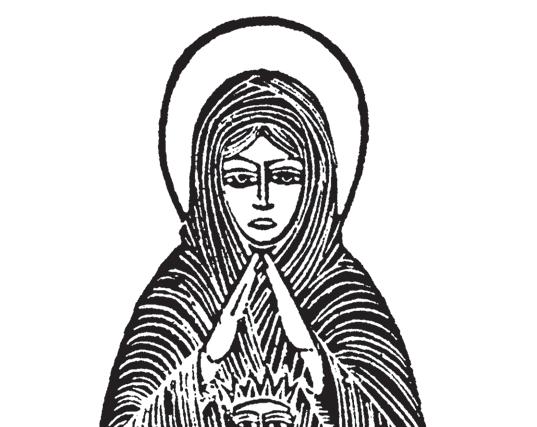


Bishop Joseph Pepe: This has been quite a challenge. Our statistics from last year went from 630,000 Catholics to 722,000 Catholics, according to an annual census by the university of Nevada Las Vegas.
One of the challenges for us in the city is the number of people in each parish. We are fortunate to have a number of external and retired priests who help us in each parish. We average between 7,000 and 8,000 families per parish.
OSV: Do tourists account for a significant percentage of worshippers?
Bishop Pepe: I say the Cathedral Mass often, and we see 3 million people a year at the Cathedral and the Shrine( of the Holy Redeemer). We have a regular crowd of 1,100 to 1,200 at Masses there. I’m also amazed at the number of people from out of town who go to confession.
Across the diocese, we have done things like change times to make confession more available. I see a lot of men going back to confession, and that’s why I feel very happy and confident that our faith will grow, because there really is a tremendous expression of faith here.
OSV: What do you attribute to this growth in confession.
Bishop Pepe: People see it as more available. We’re finding, at least with our young people, that they are really thirsting for the Lord and want to be involved in the sacramental and social lives of the Church.
OSV: Given the demographics of the diocese, how critical is the laity to the vitality of the diocese?
Bishop Pepe: What’s happening is that many of the parishes have large staffs of lay people who help in various ministries and who are involved in many of the day-to-day activities. Some parishes have 140 extraordinary ministers of the holy Communion and religious education programs with between 70-100 volunteers.
OSV: Las Vegas is best known as an enclave for gambling and other vices. How does this perception impact the faithful?
Bishop Pepe: I think that Catholics are very conscious of the negative messages sent out by the city. I find that those who practice
their faith regularly are very vibrant and involved in all sorts of aspects of their church community, I thank God every night for the blessings these people give through their energised faith. I think because they see the contrast, they want to strengthen their own faith and values.
OSV: With so many temptations , including gambling and prostitution, accessible and legal, what does the Church do to temper such actions or help Catholics find help and forgiveness?
Bishop Pepe: We probably have all (the temptations) other cities have. Most parishes have outreach and counselling. Catholic charities has a whole program to help people reassess their life-get back on the road as jobs and all. Each one of our parishes has some type of program to help.
One of the things we’re learning is there are a lot of single mothers who can barely afford more than housing and utilities and can’t afford to feed their children.
Catholic charities offers three meals a day. Also, for seniors, we offer extensive Meals on Wheels for all who are eligible in Southern Nevada, through Catholic Charities.
OSV: In addition to gambling, prostitution is also legal in parts of Nevada. What is the Church doing to combat this?
Bishop Pepe: It is a very difficult problem because it is legal here in the state of Nevada, but through the Nevada Catholic Conference we keep our eye out for any possible change in the law and make evident from our beliefs that we continually lobby for change.
Our initiative in this area has been greatly supported by the Church of Latter-Day Saints in it’s promotion of family values and life and opposition to any behaviour in conflict with these values.
OSV: What are your hopes and plans for the diocese?
Bishop Pepe: My vision is first of all to really put those churches and structures in place so we can have better outreach with fewer people.
When looking at the number of 700,00 Catholics, probably a large number are not practising. The challenge is, how do we reach them?
With vocations, we have five men studying for the priesthood. We plan to have a vocation Sunday in each one of the parishes during the year with Mass and a program in the afternoon to speak to parents and young people about how important it is to consider a vocation.
One of our other visions is to have a catechesis program that meets all stages of one’s life.
We don’t want people to stop coming at first communion or confirmation. I say at my talks throughout the diocese, “We don’t want you to leave your children at the door. We want you to come in and grow in faith. Christ can’t speak to you maturely if you only have a first communion understanding of him.”
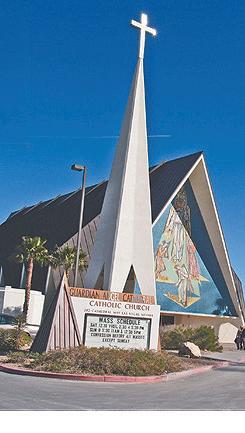
Ancient church in dire straits
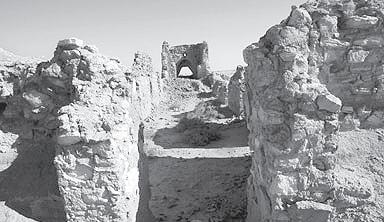
AIN TAMUR, IraqNo-one celebrated Christmas in AlAqiser church on December 25, for what many consider to be the oldest eastern Christian house of worship lies in ruins in a windswept Iraqi desert.
But 1500 years ago, the first eastern Christians knelt and prayed in this barren land, their faces turned towards Jerusalem.
The remains of Al-Aqiser church lie in the windswept sand dunes of Ain Tamur, around 70 kilometres (40 miles) southwest of the Shiite shrine city of Karbala, forgotten by most.
But some Iraqis are determined to restore the ancient edifice to its past glory.
“It is a place of worship, a church, and without doubt, the oldest church of the East,” said Hussein Yasser, the head of the antiquities department of the province of Karbala.
“According to our research, it was build 120 years before the emergence of Islam in the region,” Yasser said.
In time, Karbala overshadowed it and became a key Muslim Shiite pilgrimage destination, while across the region Christian communities began to recede.
Deserted by its worshippers, AlAqiser slowly sank into the sands
and would have been totally forgotten had it not been for a team of Iraqi archeologists who stumbled on its ruins in the 1970s.
The foundations of the church jut out of the desert, forming a perfect rectangle 75 metres (yards) long by 15 metres wide.
The nave is clearly visible as well as the central part around the altar where masses were celebrated.
“The church was built facing Jerusalem,” said Yasser, who has been struggling since 1993 to attract funds and interest to restore the church and carry out excavations in the area.
His efforts were briefly rewarded some years ago when the authorities agreed to finance a brief excavation that lasted six months.
The work revealed an archway which he believes probably belonged to an underground crypt, bearing inscriptions in Syriac -- the language spoken by the first Christians.
“I am sure there is a city underneath the sand,” said Yasser, a Shiite Muslim.
“Even then the city was known as Ain Tamur and stood at a major trading junction between Persia, the Arabian peninsula and the Roman empire,” he added.
“There used to be a vast lake. People made their livelihood from
fishing,” he said, adding that the site was more archeologically, than religiously, significant.
A sand embankment indicates the location of the outer walls that protected the church, and Yasser is convinced that the uneven terrain that surrounds the church hides a wealth of archeological evidence.
“There are certainly houses beneath it all, and inside I am sure we can find cooking utensils, inscriptions,” he said.
In the past Catholic Chaldeans, the largest single Christian denomination in Iraq who follow an eastern rite but recognise the Pope in Rome, used to pray in Al-Aqiser on Christmas Day but the faithful have not returned in a long time.
The church “is part of our country’s memory, part of the great civilisation that the Iraqis have built and it must be saved,” said Yasser.
Ain Tamur police chief Mahfoud al-Tamimi said he agreed that AlAqiser must be saved.
“The church does not belong to the Christians only or to the Muslims. It belongs to the world,” Tamimi said.
“The world must help us save it,” he said, calling for the church to be added to UNESCO’s world heritage site list.”
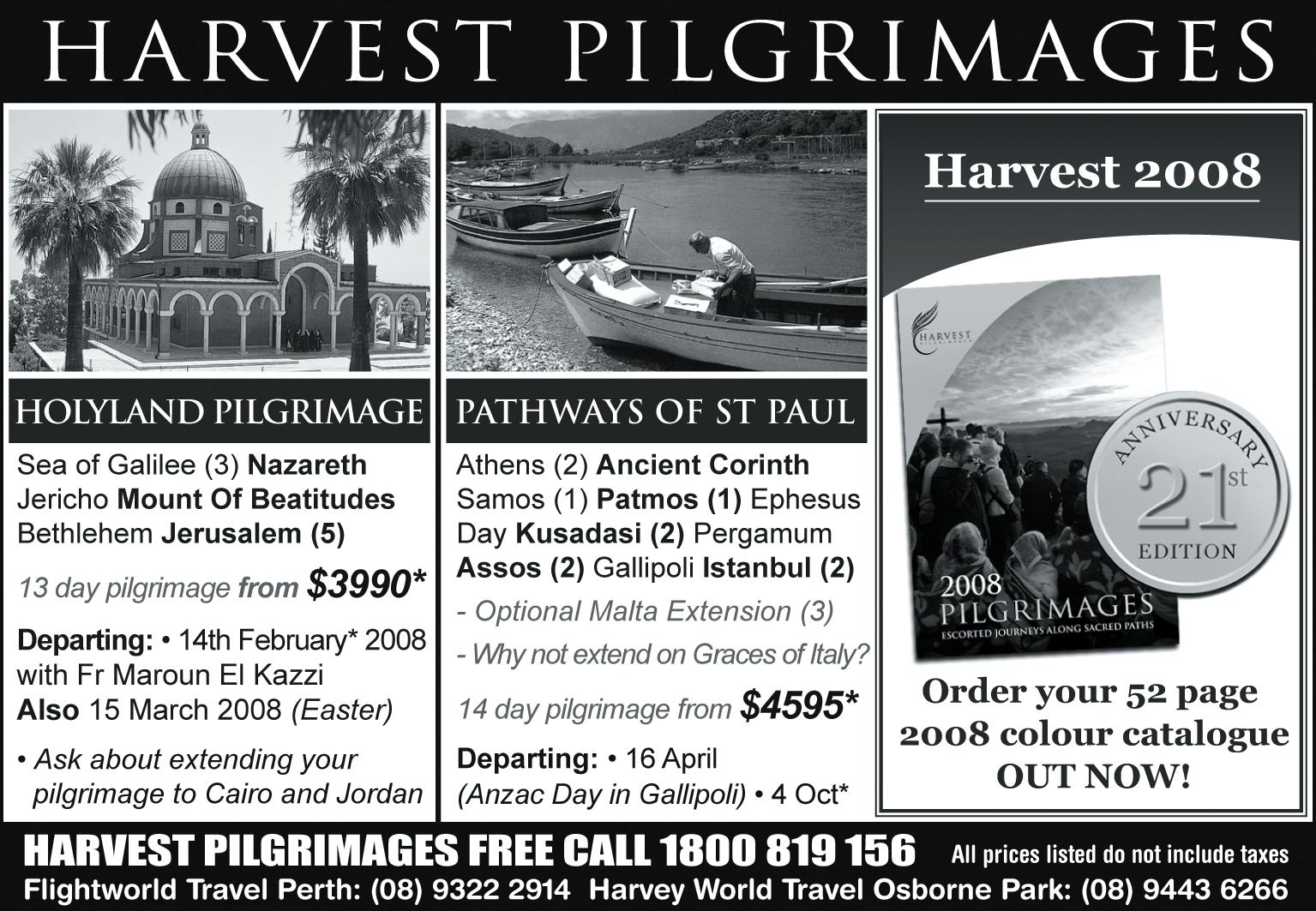
Boyfriend spikes drink with RU-486, charged
Man charged with fetal homicide accused of spiking drink with RU-486
■ By Jeff KurowskiAWisconsin man accused of causing his pregnant girlfriend’s abortion by spiking her drink with RU-486 is being prosecuted under the Wisconsin fetal homicide law that classifies unborn children as potential crime victims.
Manishkumar Patel of Kaukauna, free on a $750,000 cash bond, was awaiting a January 30 preliminary hearing in Outagamie County.
“In charging Patel with attempted homicide, Outagamie County law enforcement is simply using common sense,” said Peggy Hamill, state director of Pro-Life Wisconsin.
“All preborn children deserve equal protection under the law, without exception,” she added.
“Ironically, under Wisconsin law, if the woman had taken RU-486 by her own hand, there could be no charges. God willing, more law enforcement officials will work to protect the lives of preborn children in our state, wanted or unwanted.”
“Without Wisconsin’s fetal homicide law, there would be no basis on which to charge Patel in the death of the child,” said Susan Armacost, legislative director of Wisconsin Right to Life, in a press release.
“As horrible as this situation is for the child’s mother, she can at least be comforted by the fact that her child is recognized as a victim under the fetal homicide law and that the death of her child is a crime in Wisconsin,” she said.
The mother of the unborn child in the case is Dr. Darshana Patel, a family physician from Kaukauna who is not related to the accused. Both Patels are from India; Patel is a common Indian name.
On September 17, Manishkumar Patel allegedly gave Darshana Patel a drink spiked with RU-486. Although she did not ingest that drink because she said she noticed
a powdery substance in it, police suspect he caused her miscarriage two weeks later and one she had 10 months earlier.
In November 2006, Manishkumar Patel gave her a glass of milk that he said contained saffron. The following morning, Darshana Patel became ill and miscarried her 14week-old fetus.
Her boyfriend denied any involvement in the death of the baby, later named Shankar by the mother. Darshana Patel, who also has a threeyear-old son with Manishkumar Patel, sought help from Elizabeth Ministry of Kaukauna following her 2006 miscarriage. Founded in 1991 by Jeannie Hannemann and the late Capuchin Father Kurt Gessner, Elizabeth Ministry provides support to women and their families who are dealing with pregnancy, birth, miscarriage, stillbirth, regret over an abortion, infant or child death, crisis or special needs, as well as adoption or fertility issues.
“We helped (Dr Patel) by placing her baby in a proper burial vessel,” said Hannemann. “Shankar was the first baby in our chapel. Even though she is Hindu, she was comfortable in the chapel during a week of mourning. Our service was really from the mother’s heart. She asked questions about the Christian traditions. It was a beautiful witness about Jesus.”
While the legal ramifications of the allegations against Manishkumar Patel have drawn considerable media attention, Hannemann said she hopes the victims in the case remain in people’s hearts.
“I hope this story teaches people about the importance of giving respect, honor and dignity to children lost to miscarriages and, in this case, most likely a murder,” she told The Compass, newspaper of the Diocese of Green Bay.
Initially, the case was thought to be the first of its kind, but according to The Associated Press, a Virginia man was sentenced to prison for giving his girlfriend a drug that caused a miscarriage. However, the drug used in that case was not RU486. CNS
Farmer fights for town
■ By Anthony BarichPerenjori farmer and Secular Franciscan
Brian Baxter has taken the term “faith into action” to new levels to support families in agricultural areas in a difficult time.
With costs of machinery and production spiraling at a great rate, families of the agricultural shire of Perenjori, 350km from Perth, and surrounding areas have been facing a serious struggle in their day-to-day existence.
So Mr Baxter, a farmer himself in the town surrounded by rich grain and sheep areas, set out to industrialise his Shire which was losing people, and the farming landscape itself was changing with farmers buying out farmers.
Shortly after becoming Shire president in May 1999, he was invited to address then-West Australian Premier Richard Colurt and his Cabinet in Moora after the floods.
Mr Baxter’s council had researched the assets his region had to offer and he proposed to Mr Court the possibility of mining iron ore out of Mount Gibson, 85km east of Perenjori on the Great Northern Highway, and transporting it out to Geraldton, though the Mt Gibson Iron company planned for it to go through Kwinana.
For this to happen, however, a decent road had to be built to from Mt Gibson to Perenjori. Mount

Gibson Iron has now agreed to build the road and has sent out tenders for its construction.
Having mapped it out, “we thought we’d give it a go”, Mr Baxter said, so the Midwest Development Commission – an adviser to the Minister for Agriculture, agreed it was worthwhile in 1999 and the plan was up and running.
After many negotiations, a road to get the iron ore out through Geraldton is being built by Mount Gibson Iron, which is sending out tenders for construction.
This deal will ensure up to 50 people are employed for the transport of Iron ore from Mt Gibson to the Perenjori railhead. Mr Baxter says this will help keep farming families together on the land as they can work part time in the mine and part time on the farm during these difficult times.
Iron ore production should
start later this 2008, hopefully November.
A joint venture with see the University of WA’s housing, landscaping and architecture faculties plan and build new homes that are environmentally friendly and cheaper than modern homes in Perenjori, and will be available for mining companies to use.
The community has also done research into solar power, agriculture and ‘inland aquaculture’, which will also bring people into the community, to farm fish; while research into oil seeds and the production biodiesel is also in the pipeline.
All this happened with the prayer support of Flame Ministries International after Mr Baxter met FMI leader Eddie Russell in 1991, and his evangelical group started a regular prayer vigil for the success of the venture.
Christmas, a time for love of neighbour, says Pope
Continued from Page 1
- who are so often the victims of brutal armed conflicts, terrorism and violence of every kind, which inflict such terrible sufferings on entire populations,” he said.
“At the same time, ethnic, religious and political tensions, instability, rivalry, disagreements, and all forms of injustice and discrimination are destroying the internal fabric of many countries and embittering international relations,” he said.
He also cited the rising number of refugees and evacuees from natural disasters, often caused by “alarming environmental upheavals.”
The birth of Christ brought a healing message of peace to the world, the pope said. But to receive it, faith and humility are required, he said.
“Who has time to listen to his word and to become enfolded and entranced by his love?” he asked.
In his midnight Mass homily, the pope asked a series of similar questions:
“Do we have time for our neighbor who is in need of a word from us, from me, or in need of my affection? For the sufferer who is in need of help? For the fugitive or the refugee who is seeking asylum?”
“Do we have time and space for
God? Can he enter into our lives? Does he find room in us, or have we occupied all the available space in our thoughts, our actions, our lives for ourselves?” he said.
Yet while the reality of a closed world can be seen daily, “God does not allow himself to be shut out,” the pope said. He finds a space, “even if it means entering through the stable,” he said.
The pope noted a medieval tradition of Nativity scenes depicting the stable as a crumbling palace, whose former splendor has gone to ruin. The “new palace” brought by Christ is built not on royal power but on self-giving love, he said.
The pope also outlined an environmental theme implicit in the church’s celebration of Christmas.
He cited St. Anselm of Canterbury, who in the Middle Ages “in an almost prophetic way, once described a vision of what we witness today in a polluted world whose future is at risk: ‘Everything was as if dead, and had lost its dignity.’”
Likewise, he said, Gregory of Nyssa, a theologian of the fourth century, saw the place of Christ’s birth, a rundown stable, as the symbol of an “ill-treated world.”
“What would he say if he could see the state of the world today, through the abuse of energy and its selfish and reckless exploitation?”
Bethlehem relics degrading fast
■ By Carol GlatzThe relics venerated as the crib the baby Jesus used in a Bethlehem grotto are in an alarming state of degradation, some church officials said.
The remains have become so fragile that officials at Rome’s Basilica of St Mary Major, where the crib is located, decided to suspend this year’s annual Christmas Eve tradition when the relics are carried from the crypt beneath the main altar in a procession around the basilica and displayed in front of the altar all Christmas Day.
Two of the five wooden slats are showing signs of “troublesome deterioration,” Msgr. Emilio Silvestrini, a priest at the basilica, told the Italian Catholic daily Avvenire. He said Dec. 28 that “for years” they had noticed the crib’s fragile condition had worsened.
The small wooden boards are protected inside an elegant silver and glass cradle-shaped reliquary in a little chapel under the basilica’s main altar.
The relics were brought to Rome from Palestine after Pope Theodore I was elected pontiff in 642, said Bishop Franco Gualdrini, prefect of the basilica’s sacristy, in an interview with Vatican Radio Dec. 28.
The bishop said the pope sent the relics to be housed in the Basilica of
St. Mary Major, which was called St. Mary of the Crib after it obtained the relics.
Bishop Gualdrini said that early next year they will set up “a commission of experts to take a look at the crib, examine it and say what the appropriate thing to do” will be.
He said the crib and the 19thcentury reliquary need “urgent restoration.”
In a Dec. 28 interview with the Italian daily La Repubblica, Bishop Gualdrini said it is too early to tell if the damage is being caused by woodworms or other parasites, but that “there seems to be fine wood dust near the relics.”
Msgr. Granito Tavanti, another priest at the basilica, told Catholic News Service December 28 they are waiting to hear from the Vatican, which oversees the crib and will suggest which “competent experts” can best preserve the relics.
Made from the wood of a sycamore tree, two of the crib’s planks are nearly a metre long. According to Catholic encyclopedias, studies suggest the wood planks were supports for the manger which may have been made out of clay or limestone.
Mgr. Silvestrini told the Italian daily Corriere della Sera they need “a new way to preserve the relic and for carrying it (so they will) be able to display it again next Christmas.” CNS
Perth Catholic youth band head to Sydney for WYD 2008
Continued from Page 1
the pope said.
Christ “came to restore beauty and dignity to creation, to the universe,” he said, and in this sense “Christmas is a feast of restored creation.”
The pope ended his homily by quoting from St. Augustine, who asked “Where is heaven?” and concluded that heaven can be found “in the saints and in the just.”
The pope said the saint made an important point: that the Lord is close to the humble.
“Heaven does not belong to the geography of space, but to the geography of the heart. And the heart of God, during the holy night, stooped down to the stable,” he said.
“The humility of God is heaven. And if we approach this humility, then we touch heaven. Then the earth too is made new,” he said.
The Mass included prayers of the faithful in five languages, including a prayer for peace in Arabic. A prayer in Chinese asked that all those seeking God “may receive from each of us, in words and deeds, the announcement that today the Savior is born.”
Earlier on Christmas Eve, the pope lit a candle at his apartment window as an oversized Nativity scene was unveiled in St. Peter’s Square below, next to a giant Christmas tree.
single on CD that sold well at Goliath and who play the Perth pub scene regularly, will perform as part of the Archdiocese of Perth’s Goliath Goes To Sydney extravaganza.
The proposal has been approved by WYD08 organisers and will see a host of Perth’s finest musicians that have performed at the past two Goliath events – at Highgate’s Catholic Pastoral Centre and the Disciples of Jesus Covenant Community’s Osborne Park headquarters – perform.
The Flame Ministries International band that formed the climax of last year’s Goliath event was also successful in applying to play at WYD in a separate proposal.
FMI has produced two CDs that The Record Bookshop sells – My Word The Message (2001) and The Freedom Album (2006).
The West Australian invasion of WYD will continue as up to three groups of Perth’s Disciples of Jesus community will run ‘Animating Catechesis’ courses that will complement the high-profile speakers.
The FMI band’s lead singer, keyboard player and guitarist Patrick
Carre sees WYD as a potential springboard to his dream – to take the band onto the international stage.
Most importantly, however, Mr Carre says the call to perform at WYD is as much about preparing on a spiritual level as well as honing one’s musical talents.
“The performance at WYD will be different from what we usually do – leading praise and worship,” Mr Carre said, who has joined a secular pub band as part of his quest to improve his musical talents and ability to interact and connect with audiences.
“It’s a means to get the person to a place where they want to get to know Jesus on a personal level. Writing songs is one aspect, but how they can be used to bring them to that conviction is just as important.
“It’s more than just getting up and playing a few songs. If it’s done without conviction, without believing in it, then we won’t know who we are, why we’re doing it or what we believe.
“So preparation is about getting our own lives right, in a spiritual sense.”
Vista At a CROSSROADS
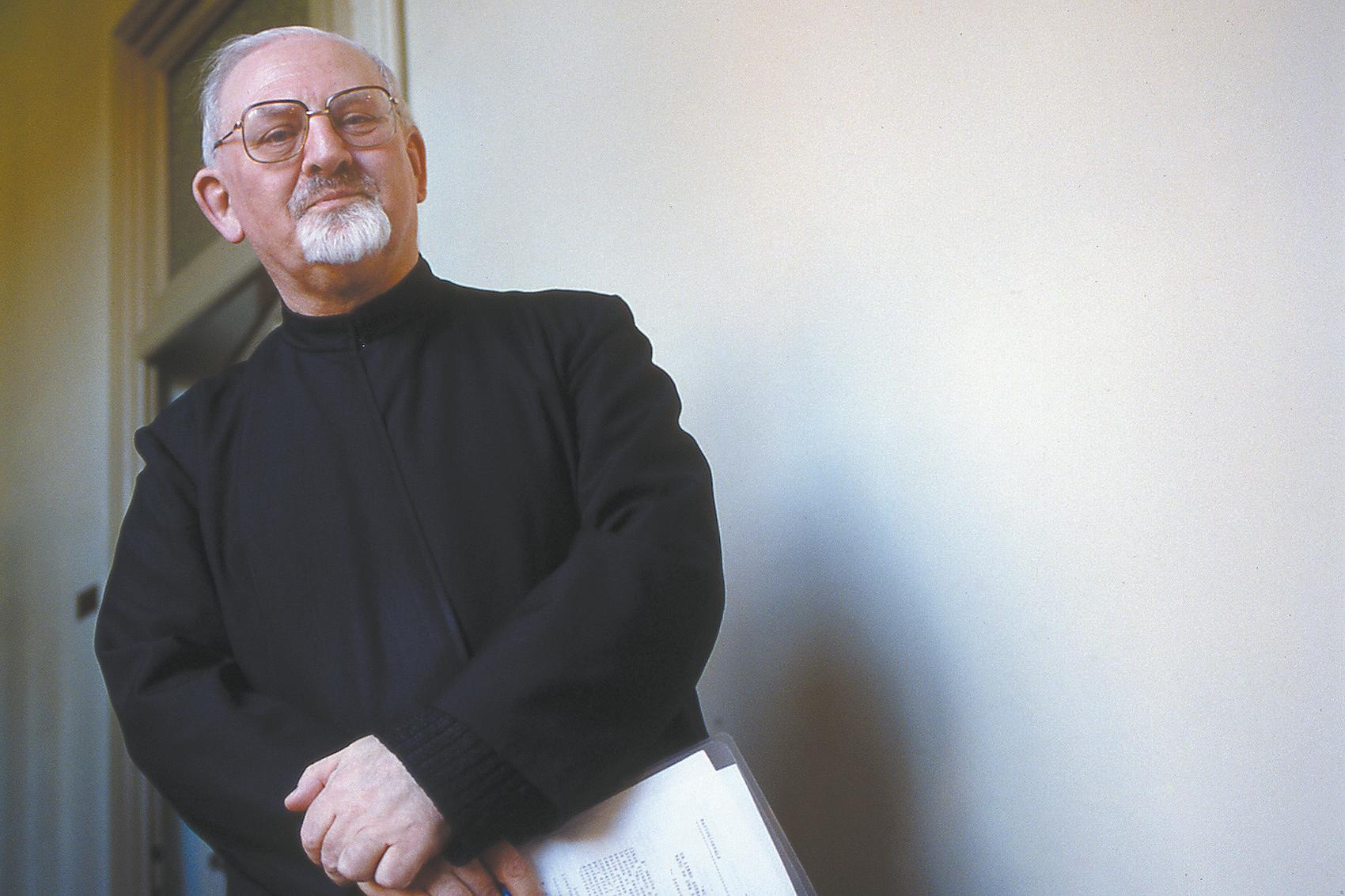

Say what you will about Jesuits, they aren’t all alike. Take
Fathers Robert Drinan and Joseph Fessio, two American Jesuits
much
in the news in that country in the early months of 2007. They seemed to have little in common besides the initials SJ - Society of Jesus - after their names.
Father Drinan, who taught law at influential US Jesuit institutions Boston College and Georgetown University, died on January 28 at 86. He was a liberal Democratic member of the US Congress from 1971 to 1981, when his Religious superior, acting at Vatican insistence, told him to step down.
Known for supporting legalised abortion in Congress, Father Drinan, a few weeks before his death, presided at a special Mass celebrating the ascent to power of pro-choice Catholic and Democratic Party House Speaker Nancy Pelosi.
As for Father Fessio, unspecified policy differences led to his March 21 ouster as provost of Ave Maria University, a staunchly con-
subsidised by Domino’s Pizza founder Thomas Monaghan. Following protests by students and admirers, he was rehired the next day as theologian in residence.
Before coming to Ave Maria, the California Jesuit founded the Ignatius Institute at the University of San Francisco and Ignatius Press publishing house. He is a friend and former student of Pope Benedict XVI.
Critical juncture
By no stretch of the imagination could either Father Drinan or Father Fessio be seen as typical of the roughly 2900 American Jesuits. Rather, the yawning gulf separating them in ideology and style suggests the internal conflicts and uncertainties that plague their religious order. Nearly 500 years after its founding by St Ignatius of Loyola, the Society of Jesus - “the Society,” as it is widely known - may be in the biggest crisis of its history.
The crisis will reach a turning point this month, when 219 Jesuit electors from around the world gather in Rome for the Society’s 35th General Congregation.
They will choose a successor to Father Peter-Hans Kolvenbach, general superior of the Jesuits since 1983, and set future directions for the order.
Preparatory work has been under way since Father Kolvenbach announced the gathering in 2006. Although Jesuit general superiors are elected for life, the Dutch linguistics specialist said he intended to resign when he turned 80 in 2008.
Jesuit Father Raymond Schroth, a profes-
At its general congregation early next year, the Society of Jesus will seek to renew the mission and leadership of this influential order, writes Russell Shaw.
sor at St Peter’s College in Jersey City who’s written a history of American Jesuits, calls this general congregation “a critical one - on the scale of the 31st General Congregation, which embraced the reforms of the Second Vatican Council, and the 32nd, which committed the Society to the struggle for faith and justice.” General Congregation 35 “will determine our priorities for the next generation,” he said.
Dwindling membership
While speculation about the next superior general is only that - speculation - the choice of a non-European for the first time is a distinct possibility.
The shift in the Society’s demographic centre of gravity is reflected in the fact that the Jesuits’ South Asia Assistancy - in essence, India - is now the order’s largest, with little more than 4000 members, or 29 per cent of the world total. US Jesuits were once the most numerous national group.
With about 19,000 members, the Society of Jesus is the Church’s most numerous Religious order of men. (Franciscans number about 30,000, but they are divided among three Franciscan orders.)
Jesuits operate high-visibility institutions like the Gregorian University in Rome, Vatican Radio and an international network of schools. They publish influential periodicals like Civilta Cattolica in Rome and America magazine in the United States
But the last 40 years have witnessed a huge drop in their numbers. The total peaked at more than 65,000 in 1965 and has fallen by 46,000 since then.
In Passionate Uncertainty, a friendly but not uncritical study of US Jesuits published in 2002, Peter McDonough and Eugene Bianchi conclude that, as things stand, the Society in America is “an understaffed conglomerate”. McDonough is an emeritus professor of political science at Arizona State University, while Bianchi is an emeritus professor of religion at Emory University who left the Jesuits in 1968 after being a member for 20 years.
Loyal opposition
A half-century ago, the Society was commonly viewed as sophisticated and ultraconservative. The sophistication persists, but the conservatism is, on the whole, long gone. Change set in even before the Second Vatican Council (1962-65). No figure better reflected that largely subterranean shift than Jesuit Father Pierre Teilhard de Chardin (18811955). A palaeontologist who went on expeditions in Africa and China, Fr Teilhard was an ardent evolutionist with a mystical bent who sought to integrate evolutionary theory with Christian faith. Although his superiors, under pressure from the Holy See, forbade the French priest to publish his books, the manuscripts were circulated privately for years. When Fr Teilhard’s The Phenomenon of Man finally appeared publicly after his death - the French edition in 1955, an English version in 1959 - it and its successors became cult objects among Catholic progressives and helped shape the context for the confused reception of the ecumenical council.
At Vatican II itself, the corps of progressive theologians included prominent Jesuits such as Church-State theorist Father John
Courtney Murray from the United States and Father Karl Rahner, a German generally regarded as the most influential of them all. More recently, Jesuits have been leading figures in the controversial theological movement called liberation theology. Jesuit moralists like Fathers Joseph Fuchs and Richard McCormick played leading roles in promoting relativistic moral systems like consequentialism and proportionalism, which Pope John Paul II rejected in his 1993 encyclical Veritatis Splendor
In sum, Jesuits over the years have often resembled a kind of loyal opposition in the Church. McDonough and Bianchi call “tacit dissent” a way of life for many of the 430 present and former American Jesuits they interviewed for their book.
Prosperous times
But it wasn’t always like that.
Founded in 1534 by St Ignatius of Loyola and six companions, the Society of Jesus expanded rapidly and was a major force in the CounterReformation, which stymied further expansion of Protestantism in Europe. Over the two centuries that followed, the Jesuits were widely admiredand in some circles feared and disliked - as apologists, educators, missionaries and martyrs.
By the late 18th century, opposition had grown to such an extent that pressure from Catholic monarchs, freethinkers and enemies within the Church resulted in Pope Clement XIV suppressing the order in 1773.
The exception was Russia, where Empress Catherine the Great refused to promulgate the pope’s decree and the Society continued to exist Elsewhere - including Maryland, where Jesuits landed with the first colonists in 1634 - former Jesuits hung together and waited for better days. Father John Carroll, soon to be first bishop of the new United States, was one.
In 1814, Pope Pius VII restored the Society and it was allowed to function again. From then on, it grew and prospered. In the years after the restoration, the Jesuits cultivated a reputation as ultra-orthodox, ultra-loyal papal supporters.
Turmoil and a coup
Since Vatican II, however, Jesuit numbers have been in free fall, while the group’s self-image has been in frequently tumultuous flux. As early as 1973, a Time cover story called the Society “a microcosm of the tensions and turmoil that are sweeping the Roman Catholic Church as a whole.”
“The old certainty that guided the Jesuits for so long has vanished; the new anxieties have arrived,” the magazine said.
A key moment was the election in 1965 of Father Pedro Arrupe as 28th superior general. Father Arrupe, the first Basque to head the Society since St Ignatius, led the order in new directions in pursuit of a social-justice agenda. But in 1981 he suffered a debilitating stroke.
Pope John Paul then staged the equivalent of a peaceful papal coup, installing two Jesuits of his choice to direct the sometimes-unruly order and prepare for a general congregation to select a new general. According to insiders, that episode still rankles with at least some. McDonough and Bianchi quote one who calls Pope John Paul “probably the worst pope of all time.” Eventually, nevertheless, a general congregation was held. It chose Father Kolvenbach as 29th general.
He is widely credited with a politically astute performance in a difficult job, of which staying on the right side of the Vatican is a crucial part. At the same time, he has taken a determinedly protective stance toward his men. The story - perhaps apocryphal - is told that the general, known for habitually wearing black cassock and Roman collar in public, was confronted one day by a Jesuit in lay clothes who asked why he dressed like that. “I dress the way I do,” he is said to have replied, “so that you can dress the way you do.”
Clearly, however, Father Kolvenbach is not only a diplomat but also a man of the Church and personally close to Pope Benedict XVI. In a 2004 paper “The Rules For Thinking, Judging, Feeling in the Post-Conciliar Church,” he drew on St Ignatius in criticising extremists of the left who complain that the Church “does not make as much progress as they wish” and extremists of the right who believe the Church since Vatican II
At a CROS

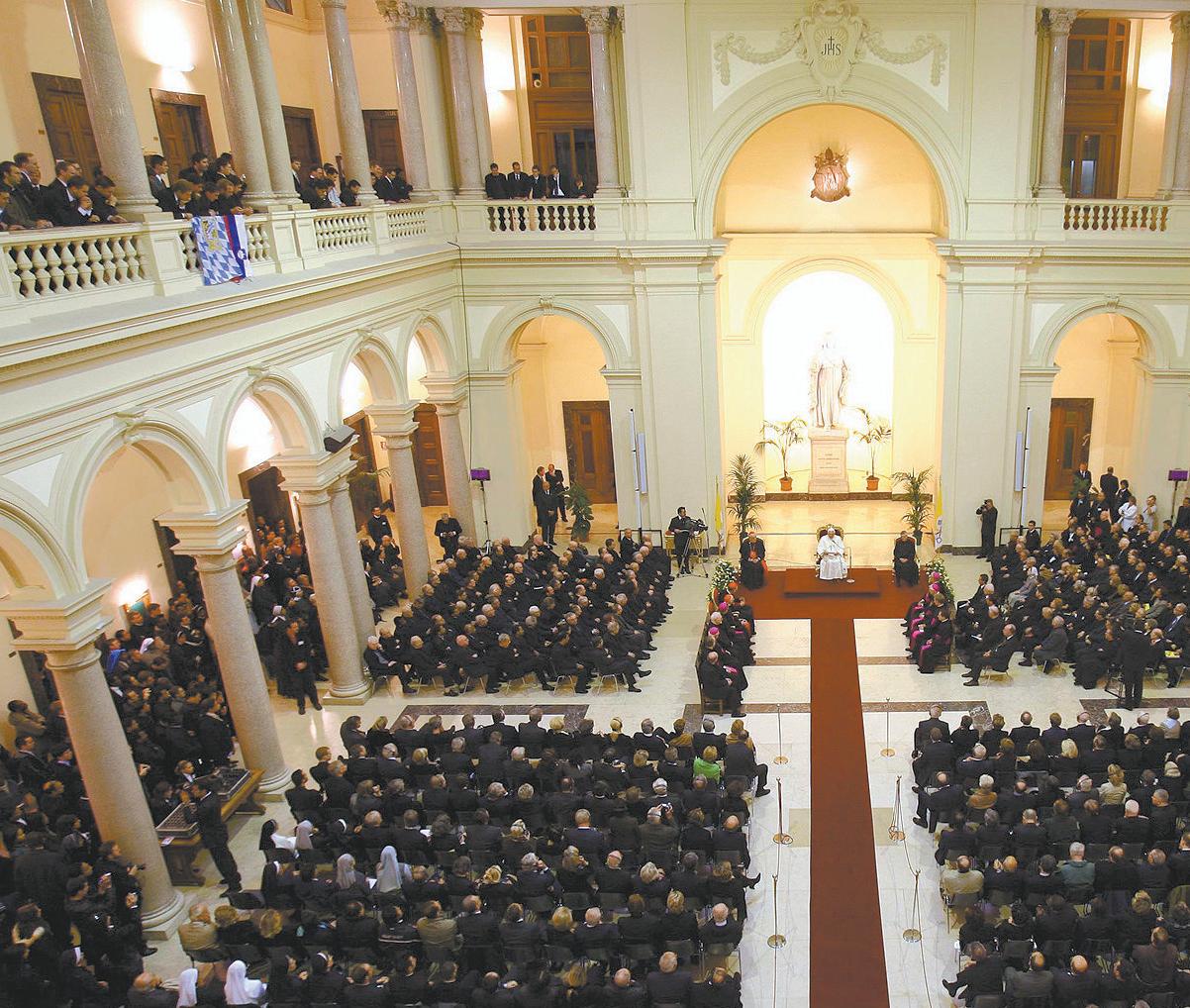
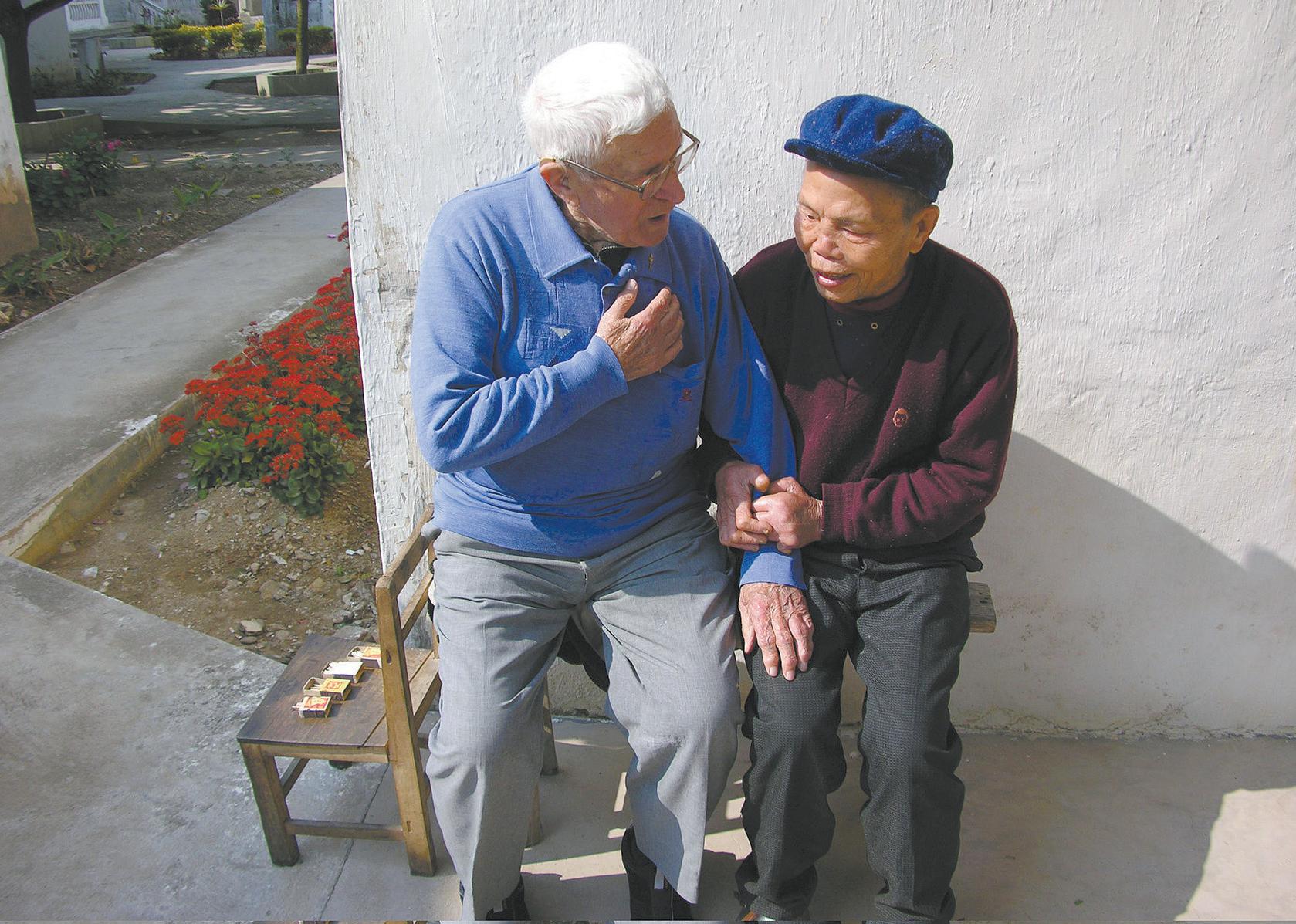
has “abandoned many precious gifts and graces.”
Calling people in both camps “dreamers,” he said: “The temptation is always strong to emphasise one aspect of ecclesial life to the point that it becomes an absolute”. We should heed Ignatius’ recommendation in the rules that ‘great caution is necessary in our manner of speaking and teaching about all these matters’ by striving to present balanced views and to avoid taking Church teaching out of context.”
Heroics in the order
The Jesuits unquestionably have produced some heroes and heroic moments in modern
times. One notable example is Father Walter Ciszek, an American who entered the Soviet Union on the eve of World War II with the intention of doing underground pastoral work. The priest was soon arrested and tried as a spy. He spent 15 of the next 23 years in Soviet prisons and prison camps until being released in 1963. His cause for beatification and canonization is now under way. Father Ciszek is not alone in suffering at the hands of ideological enemies. On November 16, 1989, six Jesuits, as well as their housekeeper and her daughter, were killed at the University of Central America in El Salvador by members of
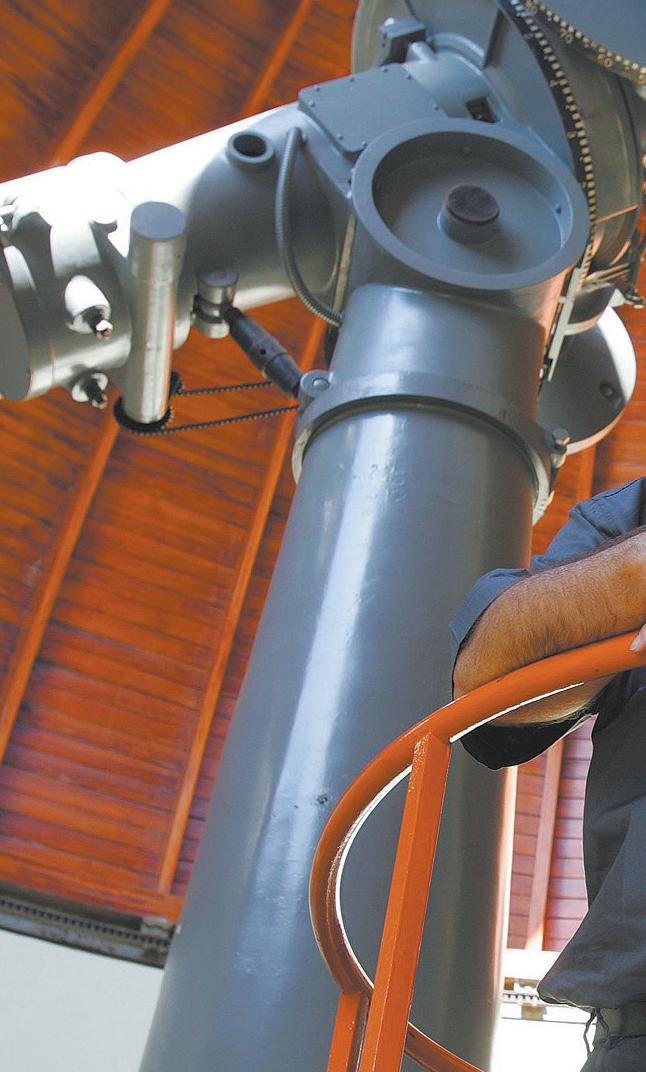
the Salvadoran military. As advocates of th and oppressed, they had been labelled sives. Earlier, in the Vietnam-era United peace protests by Father Daniel Berrigan b him admiration, notoriety and time in jail
But since Vatican II, some members Society have been identified with anoth of protest - theological - in opposition Church’s magisterium.
‘Conflicted people’
Among the small number of theologia sured by the Vatican’s Congregation f Doctrine of the Faith during Cardinal
SSROADS
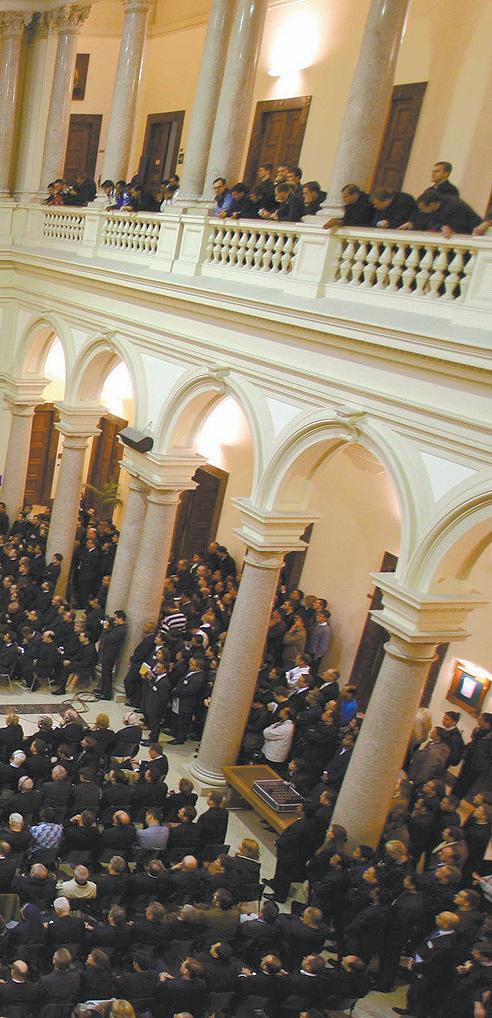
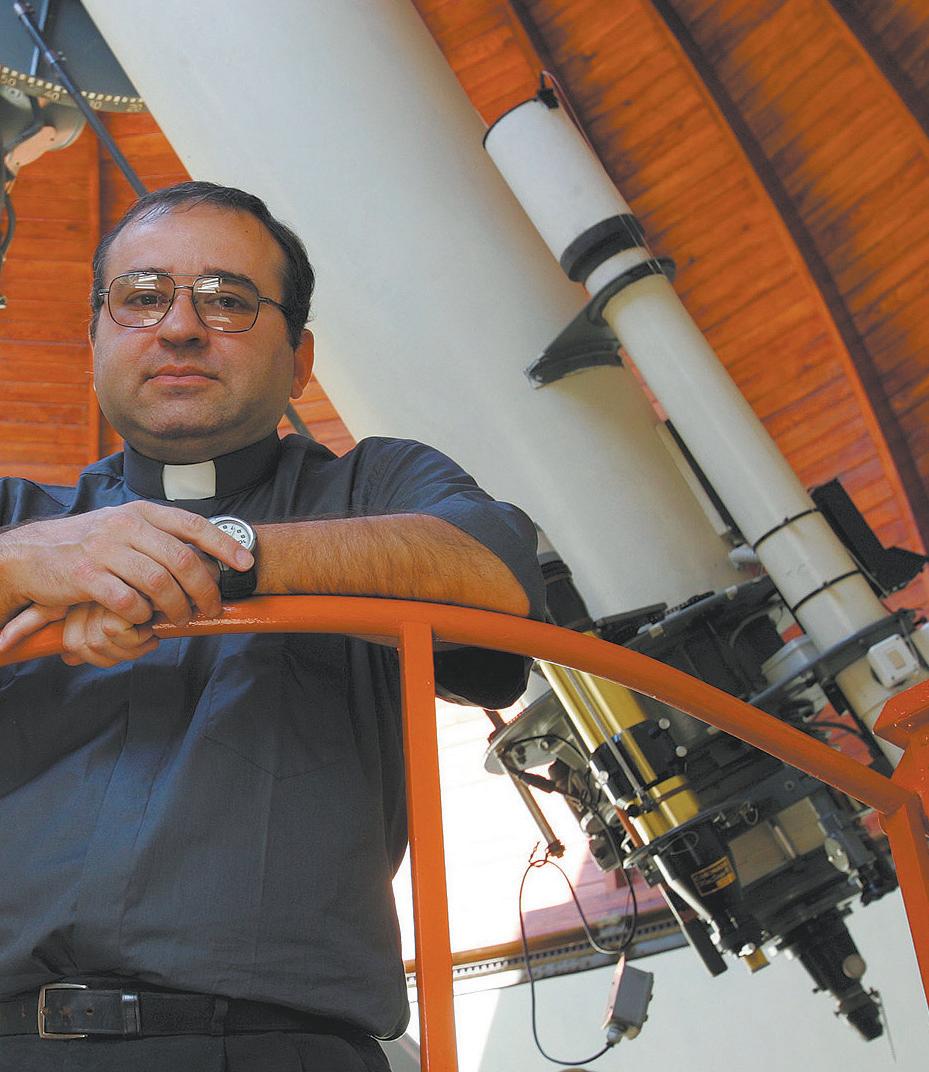
he poor subverStates, brought l. of the her sort to the ans cenfor the Joseph
Ratzinger’s years as prefect, three were Jesuits - Father Anthony de Mello, an Indian, in 1998, Father Roger Haight, an American, in 2000, and Father Jacques Dupuis, a Belgian, in 2001.
In 2007, with Cardinal Ratzinger now Pope Benedict XVI, the Spanish-born liberation theologian Father Jon Sobrino was added to the list
Still, most Jesuits don’t openly challenge the teaching of the Church. Many support it, and many others at least go along. According to McDonough and Bianchi, quiet dissent also is common.
They quote a 35-year-old theology student who says, “There are many conflicted people in
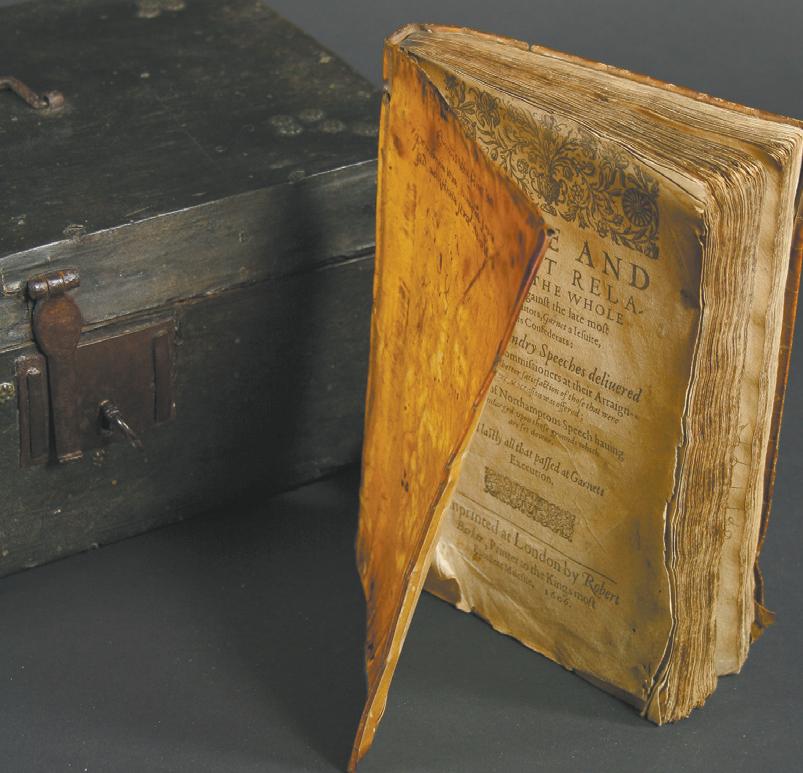
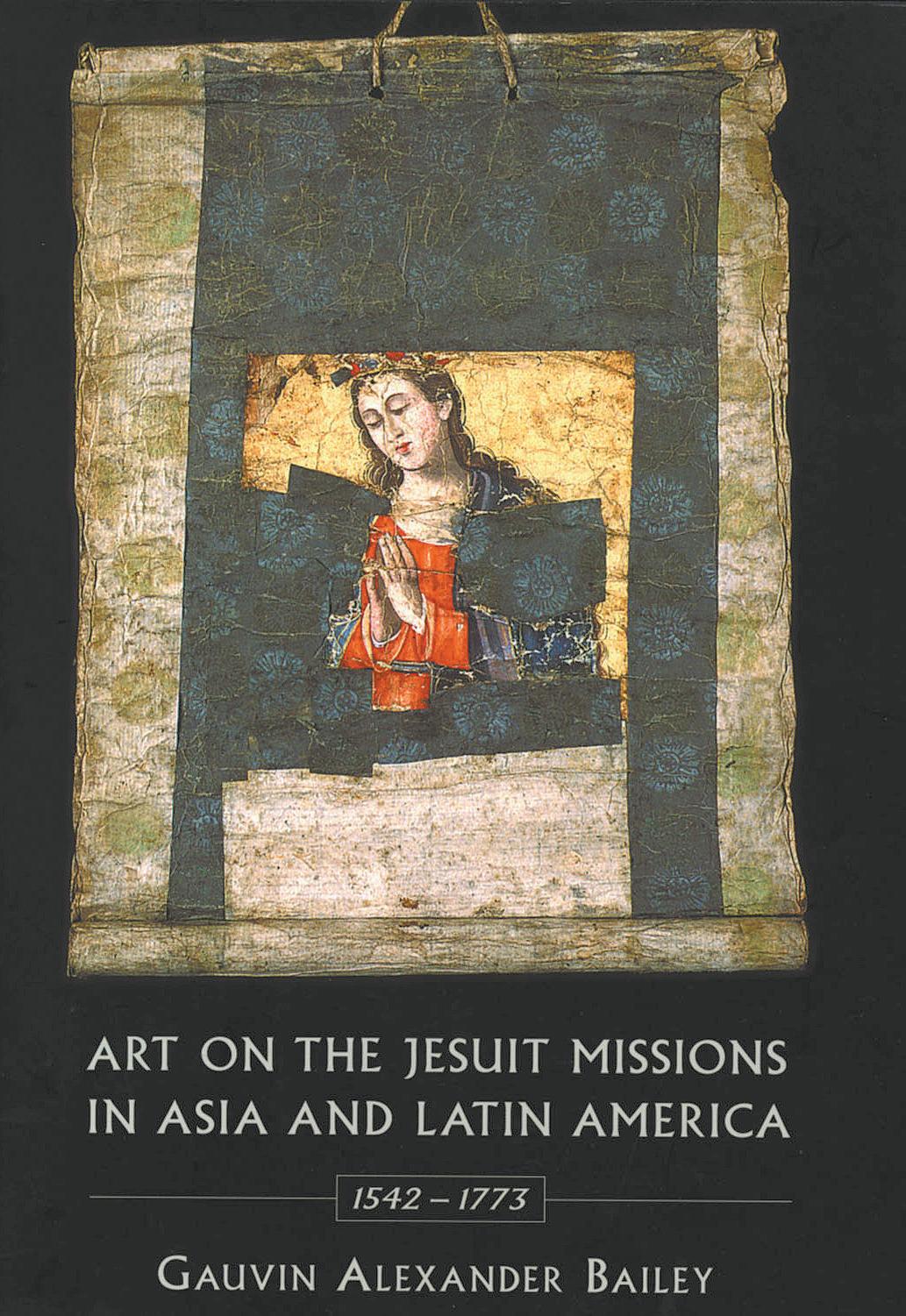
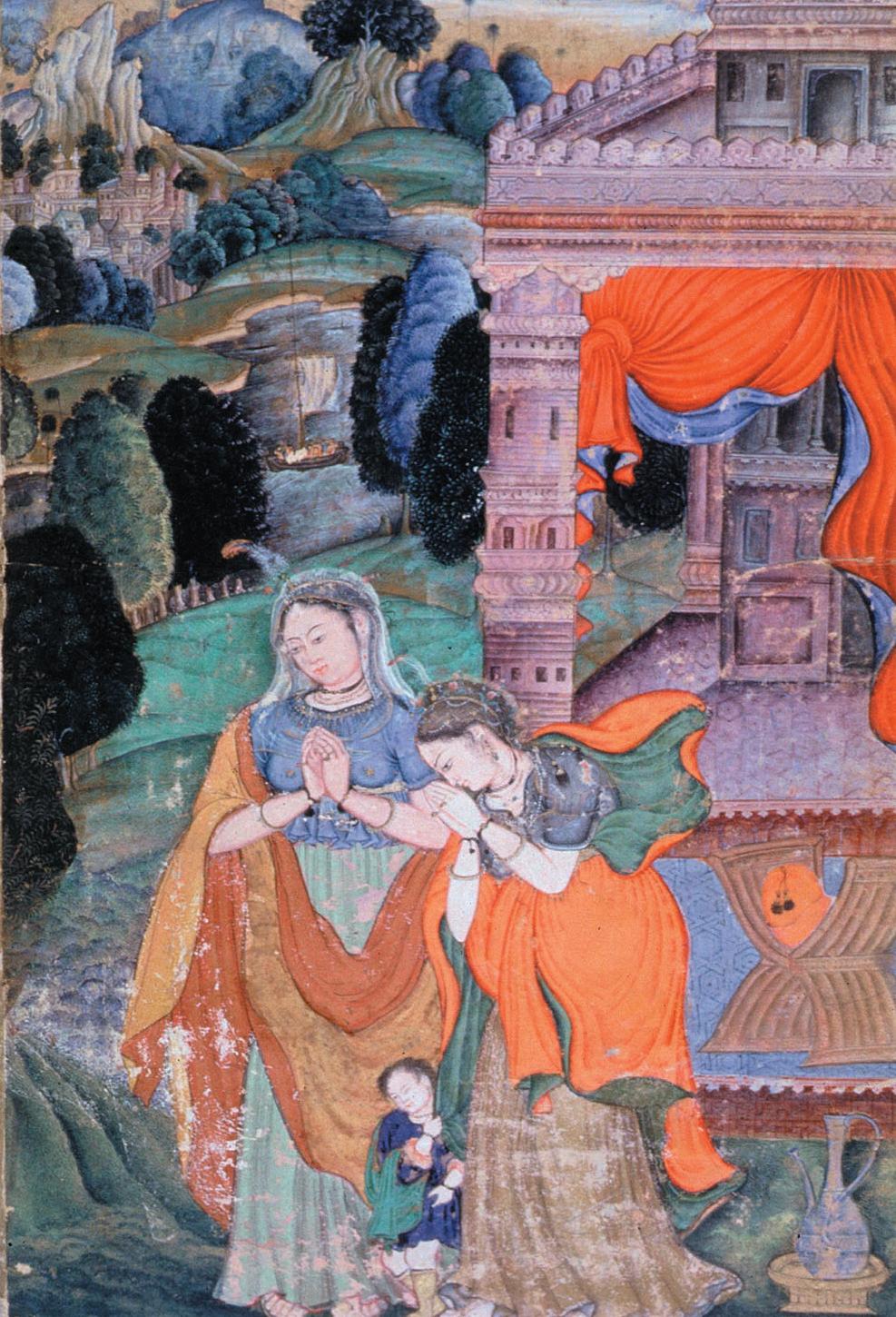
the Society, conflicted in that they don’t believe what they are necessarily supposed to teach and preach.”
The shifting identity of the Society of Jesus is a complex phenomenon that is sometimes simplistically capsulised - at least in the United States - as “graying and gaying.” Graying refers to the growing proportion of elderly Jesuits, gaying to the allegedly disproportionate incidence of homosexual orientation among younger recruits.
In neither way, of course, is the Society unique: the American priesthood on the whole is getting older and the incidence of homosexuality is said to be
Continued - VISTA 4
Saintly Jesuits
Fifty members of the Society of Jesus have been canonised - formally declared saints - up to this time, and another 146 have been beatifieddeclared “blessed” as a step toward canonisation. Among the best-known Jesuit saints and the dates of their liturgical feasts are the following:
* St Ignatius Loyola (pictured, 1491-1556), founder of the Jesuits, July 31.
* St Robert Bellarmine (1542-1621), theologian and cardinal, September 17.
* St John Berchmans (1599-1621), patron of Mass servers, August 13.

* St Francis Borgia (1510-1572), third General of the Jesuits, October 3.
* St Edmund Campion (1540-1581), English martyr, December 1.
* St Peter Canisius (1521-1597), ‘Second Apostle of Germany,’ April 27.
* St Peter Claver (1580-1654), missionary to African slaves, September 9.
* St Aloysius Gonzaga (1568-1591), patron of youth, June 21.
* St Isaac Jogues (1607-1646), North American martyr, October 18.
* St Stanislaus Kostka (1550-1568), patron of Jesuit novices, Nov.13.
* St Paul Miki (1562-1597), Japanese martyr, February 6.
* St Robert Southwell (1561-1595), English poet and martyr, Feb. 21.
* St Francis Xavier (1506-1552), missionary to the Far East, Dec. 3.
St Ignatius’s famous ‘Spiritual Exercises’
After his conversion, Ignatius of Loyola retired to the little town of Manresa and spent 1522-1523 in intense prayer, mortification and vocational discernment. One result was the masterpiece known as the “Spiritual Exercises.”
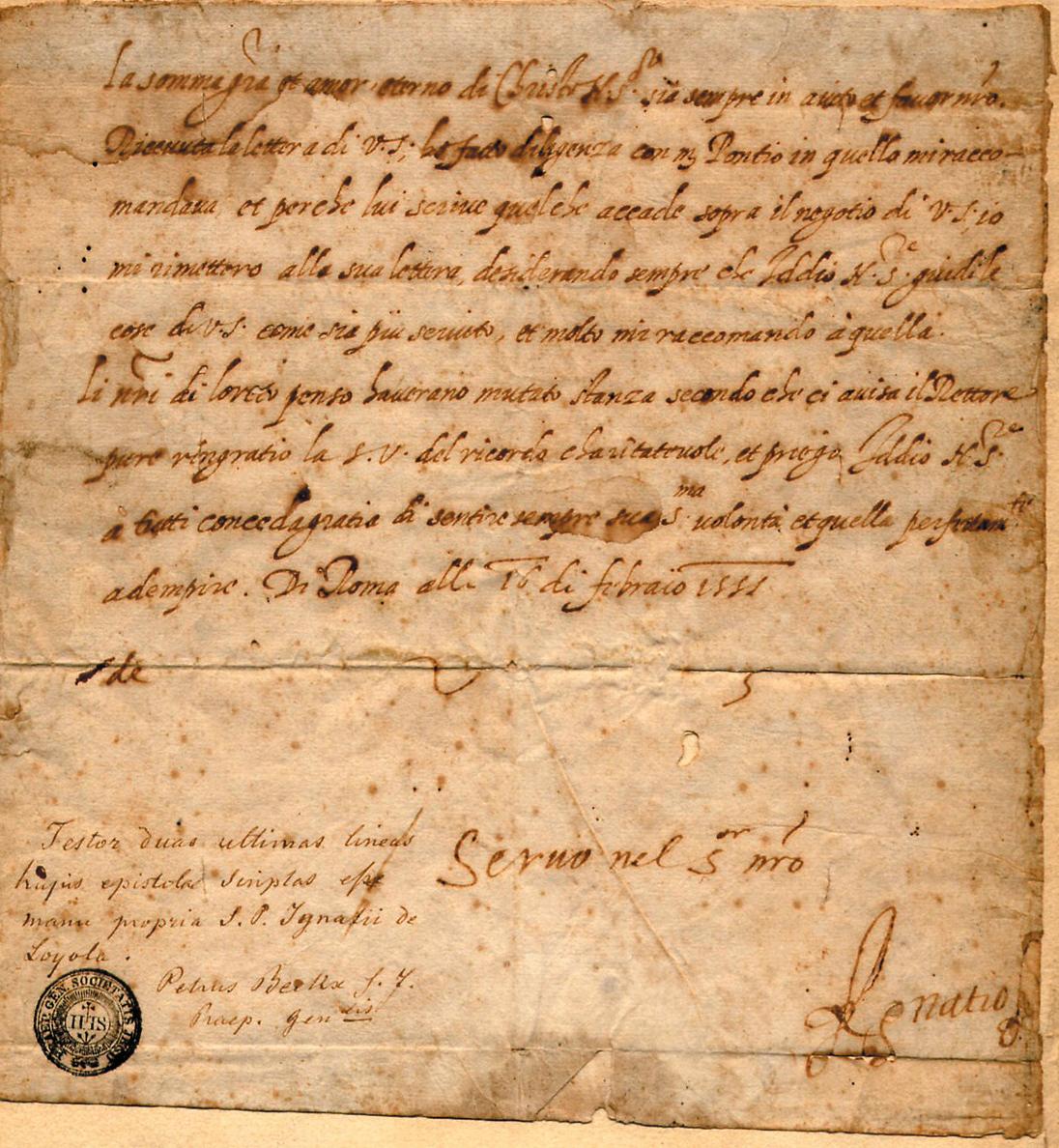
This small volume, the essence of Jesuit spirituality, is a handbook for a retreat master or spiritual director engaged in “giving” the Exercises to an individual or group. The aim is to help those receiving direction to dedicate their lives to God above all else and to discern their particular roles in God’s plan.
The Exercises are divided into four “weeks” - in theory, though not always in practice, the period of time over which they will extend. The famous “First Principle and Foundation,” described by St Ignatius as the basis for everything else, reads in part:
* “Man is created to praise, reverence and serve God our Lord, and by this means to save his soul.
* “The other things on the face of the earth are created for man to help him in attaining the end for which he is created.”
* “Our one desire and choice should be what is more conducive to the end for which we are created.”
* “Spiritual Exercises” is one of the most influential works of its kind ever written. It has been the subject of countless studies and commentaries.
Ignatius’ Australian sons to help chart new course
The Record’s national affairs editor Paul Gray spoke to Australian Jesuit Provincial Fr Mark Raper SJ shortly before his departure for the General Congregation in Rome
■ By Paul GrayWhen you speak with Father Mark Raper SJ, you get the feeling that controversy about the Jesuit order is all a thing of the past.
Fr Raper, provincial of the Society of Jesus in Australia, is open – even welcoming –towards a journalist wanting to discuss some of the tenser moments in recent Jesuit history.
Fr Raper is one of two Australians who, in the new year, will vote for the new “Black Pope” – a traditional nickname for the Superior General of the worldwide Jesuit order. He has been named by one Catholic observer in the United States, Rocco Palmo, as one of a handful of possible candidates to become the new Superior General.
The other Australian elector at the 35th General Congregation will be Father Geoff King, a canon law expert and highly ranked veteran of the 34th General Congregation held in 1995.
Fr Raper says the Jesuits have had to make many changes over the past 40 years, because the Church has asked them to make them.
And while change for the Jesuits has been rocky at times, personalities have played an important role in this. One of those key personalities was Father Pedro Arrupe, elected Superior General in 1965.
General, this period of ideological conflict began to simmer down. Again, personalities played a key role in this change.
Fr Raper describes Fr Kolvenbach as “more reserved, more nuanced” than Fr Arrupe.
Being a professional linguist by training, Fr Kolvenbach is “much more careful in what he says in his pronouncements, according to Fr Raper.
“And he’s very diplomatic in his relationships with everybody.”
One of the hardest challenges facing Fr Kolvenbach in his period as Father Superior has been putting to rest the
extensive rewriting of the Jesuits’ formal constitutions ever undertaken during the order’s centuries’ long existence.
Fr King chaired the commission which undertook this task. This time around however, he expects his Congregational duties not to be so onerous.
As Fr King sees it, there are two “levels” to the 35th General Congregation. One level is dealing with the election of a new Superior General. The other is the discussion of general business, which includes the emerging questions of the environment and Islam.
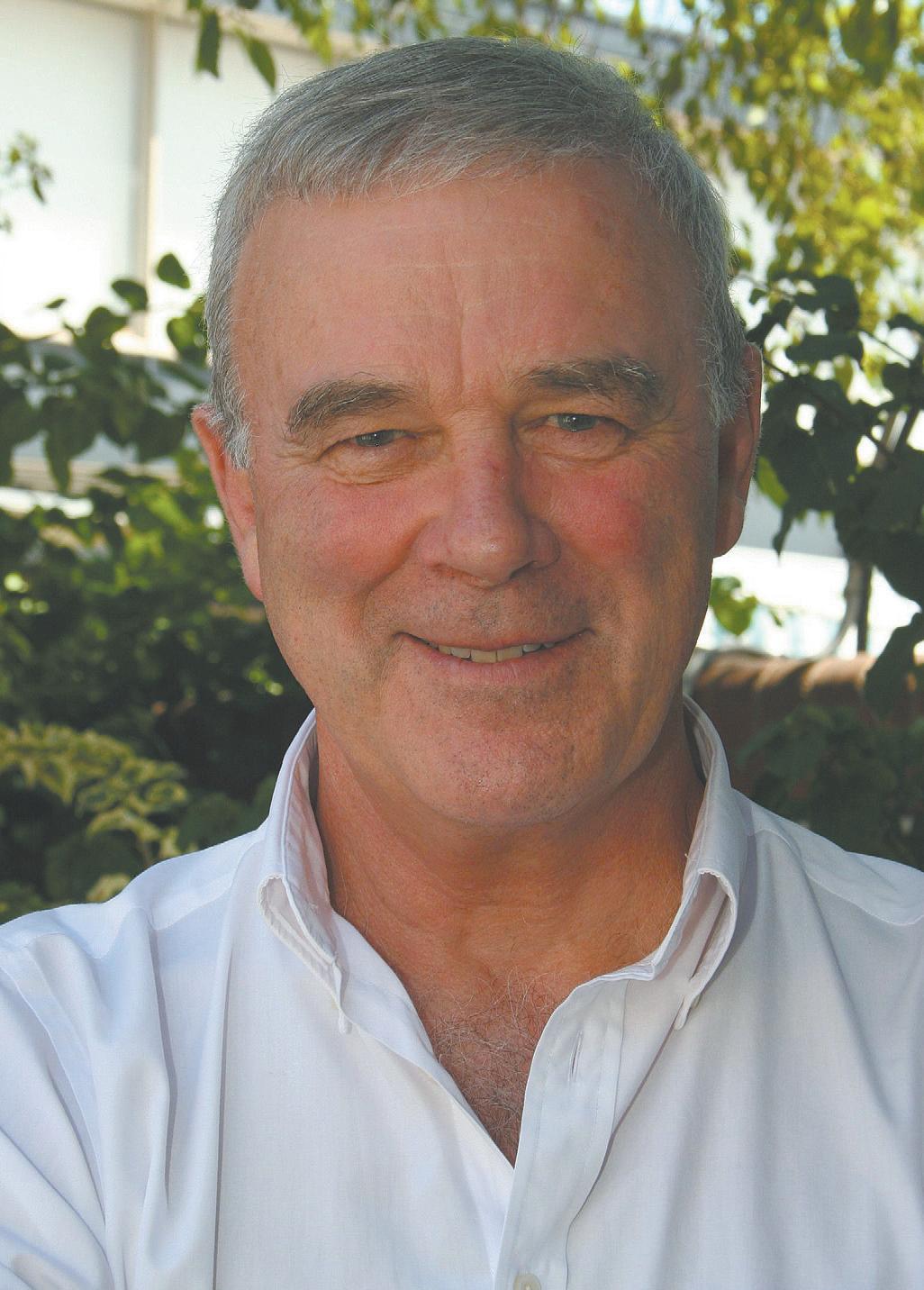
“Fr Arrupe had a very challenging time, coming in right as the Second Vatican Council was finishing,” Fr Raper says.
“The Council had called for renewal of religious life.
“So Fr Arrupe’s ‘agenda,’ and the agenda of that Congregation that elected him, the 31st General Congregation, which was one of our longest, was how you adapt the Society in the light of what the Council is asking of us, and what the Church is asking of us.”
Fr Arrupe, the Australian Provincial says, was “an enthusiastic, inspiring, highly motivating leader”.
He was “an engaging person”, and the Jesuit order was “quite mobilised” during the period of his leadership.
But this was also a period of “ideological conflict”in the world at large, says Fr Raper, when “any talk of justice got interpreted in political terms, in terms of ideology”.
The core of this conflict was the clash between East and West – between Communism and the West, Fr Raper says. Its atmosphere was memorably summed up by the famous saying of Dom Helder Camara (not a Jesuit).
He said: “When I feed the poor, they call me a saint. When I ask why the poor have no food, they call me a communist.”
After the Pope’s intervention and the installation of Fr Kolvenbach as Superior
“distrust” within the order caused by John Paul II’s intervention. In 1981, while Fr Arrupe was recovering from a severe stroke and Pope John Paul himself was recovering from bullet wounds, the Pope imposed a “personal delegate,” Fr Paolo Dezza, as temporary vicar of the order, replacing the man selected personally by Fr Arrupe, Fr Vincent O’Keefe.
This provoked anger among many Jesuits worldwide, lasting in some places beyond the subsequent election of Fr Kolvenbach by the 33rd General Congregation in 1983.
Looking back on that period today, Fr Raper says: “That distrust had to be, if you like, dealt with, without disappointing the Society, who were really shocked by the Pope’s intervention.”
Today, the Australian provincial emphasises, the period of tumultuous post-conciliar change is over, and the Jesuit order is “ready to get on with the job.” What will be much on the minds of Jesuits from around the world as they gather in Rome will be the future of Order’s mission, Fr Raper says.
That theme is echoed by the other Australian Jesuit elected to travel to Rome with Fr Raper to participate in the General Congregation.
Fr Geoff King is a canon law expert who played a key role in the last General Congregation of the order.
That Congregation oversaw the first
In relation to the Superior General’s election, Fr King says Jesuits are looking for a leader who can offer “inspiration.”
Like Fr Raper, he is full of praise for the diplomatic skills of the retiring superior of the order, Fr Kolvenbach.
Fr Kolvenbach has handled tensions with the papacy extremely well, Fr King says.
But what of the Jesuits’ future relationship with the papacy now that John Paul II’s longtime right-hand man, the former Cardinal Joseph Ratzinger, is himself the pontiff?
Fr King remarks that in Pope Benedict XVI, Fr Kolvenbach has found a more amenable person to deal with.
This is clearly important, because of the traditional closeness between the persons of the Pope and the Father Superior of the Society of Jesus.
An echo of that closeness is the traditional order of business that is followed by each General Congregation. On the first day of the meeting, the assembled Jesuits walk across St Peter’s Square after Mass and have an audience with the Pope, Fr King says.
Given the rocky recent past, the words of Benedict XVI at his audience with the delegates at the 35th General Congregation will certainly be heard attentively.
Both Australians affirm that the future and meaning of the Jesuit mission is one of the key issues to be discussed by the Congregation.
Hanging over that discussion, to some extent, is the question of new vocations. These are “very much a concern, especially in First World countries,” Fr King says. But while important decisions are made at the top, both the Order and the Church are global entities – a fact highlighted in Fr King’s statistics.
He says there are 87 provinces of the Jesuit order, and each of these has its own congregation.
This is why Islam will be such an important question for the order to discuss this time around. Relations with Islam are particularly important for Jesuit provinces like Indonesia and India.
A non-European provincial this time around is certainly a possibility, Fr King believes.
Fr King says that while every Superior General of the Jesuits so far has been of a person of European background, nevertheless the two who have dominated the past 40 years both spent a significant part of their careers as missionaries in non-European countries: Fr Pedro Arrupe in Japan and Fr Peter Hans Kolvenbach in Lebanon.
Today the large size of the Indian province means an Indian leader is “surely” possible.
Continued from VISTA 3 comparatively high, though solid numbers - as distinct from projections and guesses - are lacking.
As the Society’s identity has become less clear, McDonough and Bianchi say, several subgroups have worked out their own identities in counter-cultural terms. They identify four: religious neoconservatism, advocacy of radical social change, cultivation of a gay lifestyle and “involvement with non-Western religions.”
To some extent, too, the Jesuits’ identity issue may be generational. Recently a journalist who’d written something critical about the Society got an e-mail from a young Jesuit who largely agreed with what he said.
But after linking the problem to fellow Jesuits who joined in the 1960s and 1970s, he added: “Some of my brothers have lost their way. Things did not always go the way they imagined they would, and their heartbreak is something I see. But I also support them and ask them to see the future in new, more honest terms.”
Reliance on laity
One thing just about everyone agrees on is that, as the number of Jesuits falls, those who remain will have to collaborate with laypeople, turn formerly Jesuit-run institutions and programs over to them or perhaps do both.
High schools are an example. In the early 1960s, on the eve of Vatican II, about half the teachers in US Jesuit high schools were Jesuits. That fell to a little more than 30 per cent by the mid-’70s, around 20 per cent by the mid-’80s and single digits early in the new millennium. Lay Catholics, and in some cases nonCatholics, have replaced the Jesuits of years gone by.
Much the same thing has happened in higher education.
Overall, according to the Society’s figures, the world’s 3730 Jesuit educational institutions now enrol just over 2.5 million students and are staffed by a little over 4,000 members of the Society and 125,000 “lay, religious and clerical partners.”
General Congregation 34, held in 1995, devoted a decree to what an official summary calls “a genuine Ignatian partnership of laity and Jesuits” in “works of the Society” like schools. Said Father Schroth, “We’re betting heavily that laypeople trained in Ignatian spirituality will keep the institutions ‘Jesuit’ as Jesuits fade out.” But he acknowledged that there’s no knowing how many laity will care to commit themselves to upholding the “Jesuit heritage.” Already it’s reasonable to ask in what sense a rising number of once-Jesuit schools can realistically be called “Jesuit.”
Another approach to the problem of disappearing Jesuits lies in affiliating laymen and laywomen to the order. General Congregation 34 took a positive view of lay affiliation by “personal bond,” and some tentative programs along these lines now exist. Potential canonical difficulties aside, there’s no telling what success such undertakings will have.
Remaining questions
As the Society of Jesus approaches its 500-year mark, profound questions exist regarding mission, membership and survival.
“If the whole Society should come to an end,” St Ignatius remarked, “it would take 15 minutes for me to regain my composure.” The order is hardly likely to vanish any time soon, but 2008’s general congregation does face a grave challenge - not just to find new leadership for the Jesuits but to give them fresh reasons and renewed will to survive. Among the petitions in the official prayers for the general congregation is this: “That those attending” may receive the gift of discernment, and serve the good of the whole Society of Jesus.” It’s a prayer those who wish well to this remarkable ecclesial institution can wholeheartedly join in saying.

The Jesuits
This well-known order traces its roots to the University of Paris, where in 1534 Ignatius and several other students initiated the future order.
FORMAL NAME Society of Jesus
ESTABLISHED 1540
FOUNDER St. Ignatius Loyola
WORKS education, scholarship, spirituality, parish, social justice and mission
SPIRITUALITY Grounded in the Spiritual Exercises of St. Ignatius.
UNOFFICIAL MOTTO of God — often expressed as AMDG for the Latin “Ad Majorem Dei Gloriam”
PROVINCES 91
LIVING BISHOPS 93
LIVING CARDINALS
SAINTS 50

CURRENT MEMBERS
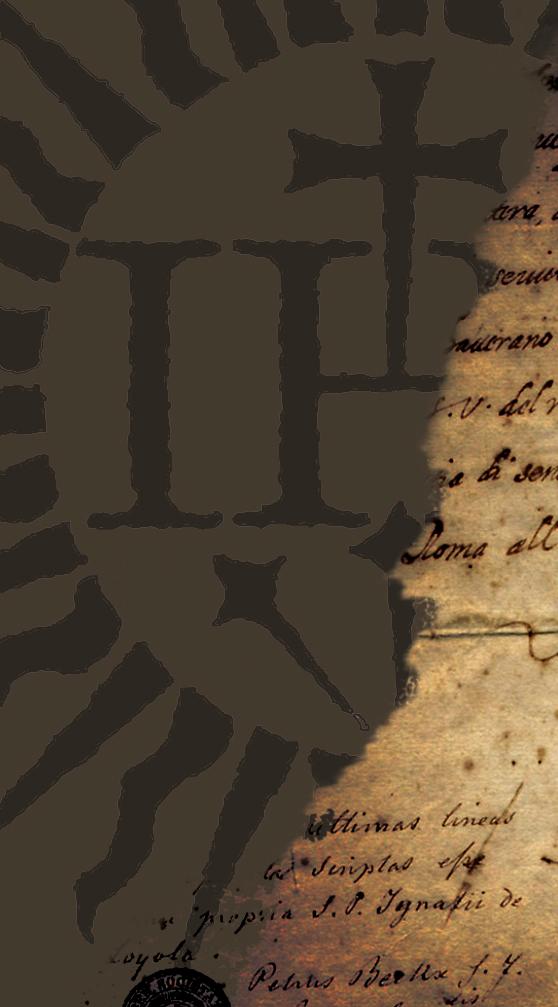
The World FEATURE California prime target for trafficking
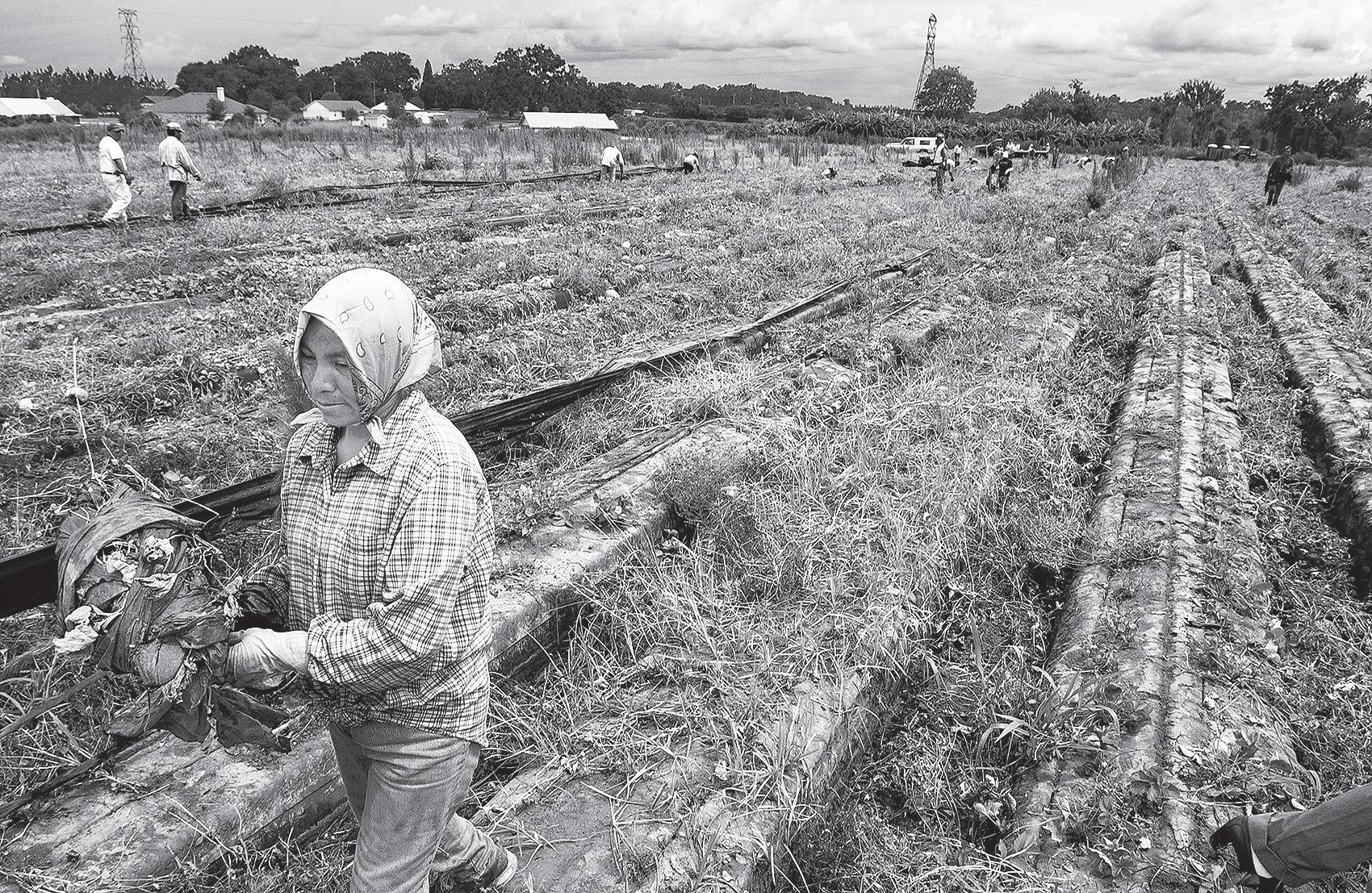 ■ By Rick DelVecchio, CNS
■ By Rick DelVecchio, CNS
Outreach efforts to victims of human trafficking were given new impetus by a recent California task force report that said the state is a prime target for trade in human beings.
Irina Goldenshteyn, a case manager for Refugee and Immigrant Services of the San Francisco Archdiocese’s Catholic Charities program, said many people don’t even realize they are victims.
“They think it’s supposed to be like that,” she told Catholic San Francisco, newspaper of the archdiocese. “They don’t know there’s any other way.”
A report released on December 4 by the California Alliance to Combat Trafficking and Slavery said the state’s international border, numerous ports and airports, soaring immigrant population and growing economy all contribute to California being a prime target for human trafficking.
It said that, beyond the sex trade, labor trafficking includes farming, construction, clothing manufacturing, domestic work, restaurants and the motel/hotel industry.
It cited a study by the Human Rights Centre at the University of California, Berkeley, which reported that 57 forced labor operations were uncovered between 1998 and 2003 in a dozen California cities, involving more than 500 people from 18 countries.
In San Francisco, local advocates fear widespread abuse among domestic workers and farmworkers. They said undocumented workers are particularly at risk from
employers who take advantage of their lack of education and sense of powerlessness.
Goldenshteyn said she hopes to recruit priests and nuns to reach out to victims and to provide other assistance.
For instance, parishes are being asked to have emergency housing available on short notice, the first component in protecting victims and starting legal action against traffickers.
She explained that a place of long-term refuge can be crucial in labor trafficking cases, which are harder to prove than sex trafficking cases. This is partly due to victims’ economic dependence on their abusers.
Goldenshteyn said neighbors and fellow parishioners also could play a role in combating trafficking. Often trafficking is happening in plain sight, but can be difficult to detect, she said. She said she recently interviewed a young Central American woman who was referred to Catholic Charities by a federal agency as a potential victim of trafficking or domestic violence. It was difficult to separate the two.
“The look in her eyes ... it was nothing specific,” Goldenshteyn said. “She spoke in Spanish and was very positive, but the look in her eyes ... (showed she was) looking for protection.”
The experience convinced Goldenshteyn that more should be done to reach out to labor trafficking victims. “I was scared that millions of people would be exploited the same way and wouldn’t be able to have help, or would be deported, or wouldn’t have the guts to tell it,” she said.
Kay Buck, executive director of the Los Angeles-based Coalition to Abolish Slavery
and Trafficking, said Asians are the most numerous labor trafficking victims, followed by people from Latin America.
Mexico and Guatemala are notorious sources of victims, who are typically domestic or sweatshop workers. Buck said she suspects there is much underreported trafficking in the agriculture industry.
“In general this crime is underreported for reasons of fear,” she said. “Traffickers not only threaten the victims but also their families back home. They’ll threaten to kill the children. We haven’t had cases where they’ll murder their kids but we have had cases where they’ll burn their houses down and intimidate the families.”
With the Trafficking Victims Protection Act of 2000, Congress adopted measures to hold foreign governments accountable and doubled the prison sentence for federal trafficking. It also created a new type of visa for victims who cooperate with law enforcement and face peril if forced to return home.
But recently, lawmakers have been hearing advocates’ pleas that more be done to provide legal protection and social services to the estimated 17,500 victims trafficked into the United States each year.
In September, Bishop Gerald Barnes of San Bernardino, then-chairman of the US Conference of Catholic Bishops’ Committee on Migration, lamented the lack of public education on the problem.
“Humane responses have remained slow,” he said in a statement. “The global community, including the United States, is only beginning to comprehend the scope and impact of selling human persons in the world.”
UK Poles risk becoming ‘a separate church’
The Telegraph in Britain has reported that Cardinal Cormac Murphy-O’Connor, the Archbishop of Westminster, urged the Polish community to do more to learn English and integrate into local parishes, claiming the Catholic Church in the UK was in danger of dividing along ethnic lines as the number of Polish-speaking churches rose.
Leading Polish community figures called for talks on the issue.
New research, revealed last week by The Sunday Telegraph, shows that an influx of eastern Europeans boosts numbers attending Mass above those at Church of England Sunday services.
However, Cardinal Murphy-O’Connor said: “I’m quite concerned that the Poles are creating a separate church in Britain. I would want them to be part of the Catholic life of this country.
“I would hope those responsible for the Polish church here, and the Poles themselves, will be aware that they should become a part of local parishes as soon as possible when they learn enough of the language.”
Fr Tadeusz Kukla, the vicar-delegate for Poles in England and Wales, said: “If we lose our national identity, we lose everything.”
A spokesman for Cardinal MurphyO’Connor said “He believes the Polish community contributes greatly to the Church in this country, but closer collaboration would make it even more effective.”
Perspectives
Nature’s beauty and yet, great
How I Pray


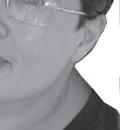

Ipray alone and I also pray with other people. I’m a grandmother, a mother and I have worked at the Emmanuel Centre for 26 years. At the Emmanuel Centre we have the Catholic Association for Special Education Support, the Catholic Mental Health Groups and the Ministry with Deaf and Hearing Impaired People.
I do have specific times that I set aside for prayer. It seems as though my whole day is a prayer.
With our type of work I never know what’s going to happen next. We might have somebody who’s quite upset walk through the door. They’ve been everywhere, tried everything and the only thing left is to pray.
We have mental health groups, parent groups and disability groups. We have a God reality group which is a group of people working in the church, in different aspects of church life. Some groups run themselves.
The whole idea of those groups is spiritual support and a place of coming together. It’s different from other support groups because it is recognised that somehow we get through whatever we go through with God’s help.
Partly we pray for the needs of the people of the group or people who aren’t there but have asked for prayers. Sometimes we have special reflection days. Each
group member is usually attached to a parish and the groups that work best are where the priest of the parish is involved. A sense of trust develops.
I’ve always gone to Mass and try to get there more than just Sunday. My parish is St Denis Church in Joondanna. I do much more listening to God these days. Most mornings I wake up at 4:15am and I spend a couple hours with the Lord in contemplative prayer. I know that I am in God’s presence.
A passage of Scripture will come into my mind and that will be my focus for a period of time. At night time I reflect on my day. I thank God for the good things. I look at the things that were not so good and ask God’s forgiveness.
In 1978 I got involved in the Ministry with Deaf and Hearing Impaired people. I went to this function for Deafness Awareness Week. I met this deaf man who was about 18. He decided he was going to talk to me and I didn’t have a clue how to talk to him.
I tolerated this for a few minutes and then I indicated that there was someone across the room I was going to speak to. It was a lie! Basically I was running away from him. Then I heard this voice saying, “Barbara, what are you doing?”
That was the beginning of my involvement with deaf and hearing impaired people. I started to learn sign language. Now I interpret most Saturdays at St Denis Church for the deaf community and other church functions or retreats.
I realise I am the channel by which people who are deaf, hear the Word. There have been times when the person giving the homily or talk has been difficult to interpret. There have been times when it’s been in Italian. It is amazing because I just get an insight into what’s going on. I’m aware that God’s presence is there. With God’s presence everything is possible.
Barbara Harris as told to Deb Warrier
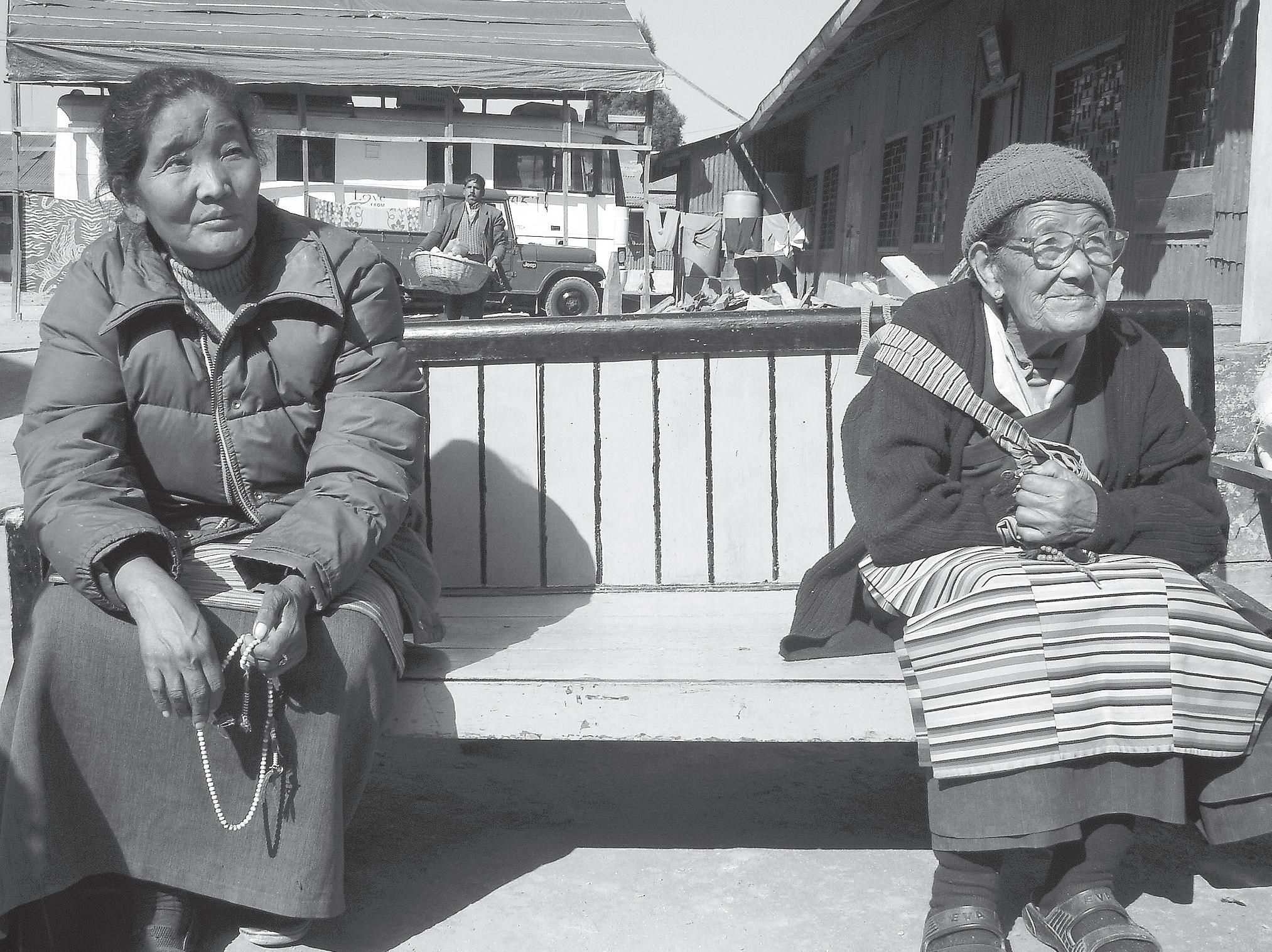
A moment’s respite: Two Tibettan women rest on a park bench at the foot of the Himalayas in Darjeeling. Many young and old, women and men carry large loads up and down the mountain faces to earn little money. Among the majestic surrounds many are living in poverty.
Edith Cowan University Journalism student Joanna Lawson has gone to India this summer to establish Branches, a project aimed at helping the exploited working poor in Goa. Her column will be appearing regularly in The Record
D
ARJEELING: Here in the foothills of the Himalayas, it is easy to forget that you are still on Earth. High above the din of cities, the quiet of Darjeeling and the view into the valley that drops further down than you can see gives the impression of being in some nether region between Earth and Heaven.Even at night, when the sun has stopped shining and robbed me of sight, the few lights dotting the facing hillside give the impression of a night sky, and I am above it
The Vine Branches
By Joanna Lawson
looking down. It is very cold here and the roads follow the curvature of the mountain, they wind their way through the town and take steep angles which test my legs that are used to the easy walking of city life.
But the local people, especially the children run down the stairs and paths as if they were mountain deer, while I resemble a circus elephant learning to stand on a bar stool.
However, this ethereal image is broken every time somebody that carries loads for a living passes by. With huge bundles of bricks, cement, fruits, anything that needs to go from point A to B, they trudge up the hills like human oxen, and neither age nor gender is a bar
to being employed in this kind of labour.
Many of the people here have fled Tibet, many of them arriving in the 1950s. They maintain their Tibetan culture, and still wear traditional clothes and jewellery. Their presence here has strengthened the Bhuddist following, and along with the native Hindu people make up most of the population.
However, the Christian presence is not missed. On the bumpy road up to this town, I observed a few little altars to Jesus and Our Lady hewn into the side of the mountain and decorated with fresh flowers and lit candles.
Pilgrims and missionaries, making their journey 7000 feet above the ground would have stopped and prayed at these little points of devotion. Though perhaps not pioneering any more, missionaries still care for the disadvantaged through projects such as women’s collectives and schools.
Because of its seclusion, Darjeeling and other remote hillstations are often overlooked by
The significance of symbols: be they secular or
Perth-based Scalabrinian Tony Paganoni CS has started a series of reflections on the significance of cathedrals in the life of a church and the wider community.
S
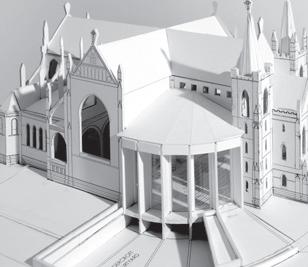 ymbols are enormously important. They have been so in the past and still are today, even if their perceived impact has changed. Somehow societies could hardlySpirit in Stone of Cathedrals and communities
ymbols are enormously important. They have been so in the past and still are today, even if their perceived impact has changed. Somehow societies could hardlySpirit in Stone of Cathedrals and communities
Anthony Paganoni CS
exist without them. In a curious way this seems to be widely recognised today.
Clubs, cultural associations, Christian communities, welfare agencies etc. yearn to be recognized and remembered not only by a particular logo, but in conjunction with this, by a symbol of their identity and mission.
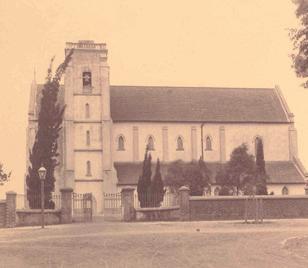
Yet there is great uncertainty about how symbols come into being, how they exercise their power and how they may fade into insignificance.
The word is so casually used that at times it is no more than a cliché.
To the question of what a symbol is, perhaps the simplest answer might be:‘an object which represents
or calls to mind a larger entity’. In the religious field, this may translate itself into some sort of “signature of God’s immanence,” A distinguished sociologist wrote:
The unity of a group, like all its cultural values, must find symbolic expression.
The symbol is at once a definite focus of interest, a means of communication and a common ground of understanding.
In post-modernist and secularized societies we have seen a retreat from religious symbolism. We exist, breathe and move mostly within the narrow confines of an urban, mechanistic, rationalistic and technological world.
A high degree of spiritual disintegration has almost destroyed our ability to respond to the world of symbols. But, shall I dare say? they will not go away.
It may not be important or necessary to state the obvious. But a symbol is not co-extensive with the object it symbolises.
If it were only that it would be, not a symbol of the thing but the thing itself.
The test by which a symbol stands or falls is not whether it does or does not faithfully reproduce the object to which it points; the test is whether it throws light on that object or obscures our understanding of it.
the state Government, and many are impoverished. Being of a native culture, the people are even more disadvantaged, as seems to be the case for most indigenous people around the world.
But to look at the rosy cheeked, fat babies, tied to their mothers for warmth and to keep her hands free to do work, it is hard to understand how these people, beautiful in both appearance and spirit, could be left behind by the government.
The house where I am staying overlooks the side of the city that faces Mount Kanchanjanga, the third highest peak in the world. Below are tea plantations, and nestled in the settlement is the Self Help Centre for Tibetan Refugees.
On my way down to visit the centre, I came across a group of children who were playing together, their parents were workers on some sites near by. Their cheeks were roughened by the cold, but they were happy with their play: some rubber piping twisted into a ball shape which they were throwing around.
Whatever fun they were having was clearly surpassed by the chance of having their picture taken, and an older boy arranged them into a group to make sure everyone fitted in to the shot.
I had learned not to leave home without some form of little gift, and the bunch of toys from my young friend in Australia dwindled by three when I passed them out to the group before leaving.
These small little presents, so incidental to us in Australia, have the value of gold to these little friends I make along the way.
It is people like these children and their parents who carry this country, by building the building, filling in the holes in the roads, getting water from the bottom of the hill to the top.
I only hope that with prayers and a continual witness to the dignity of every human person from our missionaries, they and their work will be given the respect they deserve.
Read Joanna’s Blog on the internet at: www.thebranchesproject.blogspot.com
A DISTORTED VIEW OF SEX CAN LEAD TO CONFUSION
Body Language
By Christopher West
Commentary on the Intersection of Faith, Sex, & Culture
I’ve been doing a lot of radio interviews lately promoting my new book “The Love That Satisfies.” Subtitled “Reflections on Eros and Agape,” this book offers a guided meditation on key quotes from Pope Benedict XVI’s encyclical “God is Love.”
In the midst of our pornographic culture, like John Paul II before him, Benedict is helping us recover the true meaning of erotic love (eros) as an image of divine love (agape).
The other day someone contacted me who had heard me on the radio. She thought that, by appealing to erotic love as an image of God’s love, I was somehow debasing God. We obviously have to be careful in the way we apply this imagery. Heaven, for instance, is not going to be “sex in the clouds.” We use the loving union of man and woman only as an analogy of the love we will experience in the heavenly “Marriage of the Lamb” (see Rv 19).
I’d suggest, however, that what’s really involved in the difficulty we can experience applying erotic imagery to God is not a debasement of God, but a debasement of sex. We have been conditioned by our pornographic culture to think of sex in a radically distorted way.
When this distorted vision appears as the “norm,” it becomes increasingly difficult to reclaim the pure meaning of sexuality and erotic love as an image of the divine.
When we seek to do so, we are often overwhelmed by what we might call “pornographic interference.” Like static snow on a TV screen, you try to make out the true image, but interference distorts the

picture. This, I would suggest, is the precise goal of the deceiver, the one who is ultimately behind the terrible distortion of sex in today’s world. He is quite literally hellbent on keeping us from recognizing the true meaning of our bodies and sexuality. Why? Because if we come to understand and live the true theology of our bodies, it will launch us like a rocket into the heart of the mystery of God.
As Pope Benedict explains: “The Prophets, particularly Hosea and Ezekiel, describe God’s passion for his people using boldly erotic images” (“God is Love,” n. 9). The story of Hosea taking a prostitute for a wife at the Lord’s command is well known.
In this marriage we discover an image of God’s love for us, his unfaithful spouse. Betrothed love is the proper expression of eros. Hence, since this betrothal expresses God’s love for his people,
religious we depend on them
An effective symbol is one that illuminates. Its function is to stimulate the imagination, by means of suggestion, association and relationship.
Effective symbols are an indispensable part of our intellectual stock-in-trade.
A symbol brings together, connects. In ancient Greece, when two people made an agreement, they would seal it by breaking something into two pieces – a tablet, a ring, a piece of pottery – and keeping one half each.
If one of the contracting parties later wanted the bargain to be honoured, he or someone acting on his behalf, would identify himself by
fitting his part of the broken object into the other.
The two pieces were called symbola and to match them symbollein. A symbol was originally a thing, a sign used for mutual recognition and with a shared goal.
In water-thirsty Australia, the ancient nomad’s experience, is instructive.
For the nomadic Aborigine the major concern was to be in reach of a soak, a waterhole or a creek, since for long periods there might be no rain.
To some degree, the situation has been eased by the discovery of welldigging techniques, but even these could be too few and far between.
Everywhere on our globe, settlers have chosen to live within reach of a constant supply of water. In every case, water has meant life, providing refreshment and cleansing directly for the body and symbolically for the spirit.
The illustrations used in the title of this column are of the new St Mary’s Cathedral, at left, and as it was when originally built in the 1860s.
God’s “love may certainly be called eros,” Pope Benedict tells us, “yet it is also totally agape.” (n. 9)
God’s love is a love that yearns for intimacy with the “other” and rejoices in that other’s beauty. “As the bridegroom rejoices over the bride, so shall your God rejoice over you” (Is 62:5). The prophet Ezekiel’s imagery is even more explicit:
“And you grew up and became tall and arrived at full maidenhood; your breasts were formed, and your hair had grown; yet you were naked and bare.
“When I passed by you again and looked upon you, behold, you were at the age for love. . . . I plighted my troth to you and entered into a covenant with you, says the Lord God, and you became mine.”(Ez 16:7-8)
Pope John Paul II taught that the body and erotic love have a “prophetic” meaning. The body
“speaks.” The union of spouses proclaims a “great mystery” – the mystery of Christ’s union with the church (see Eph 5:31-32). But wherever prophets are sent to proclaim truth, false prophets inevitably appear with cunning schemes to distort that truth and deceive God’s people.
Pornographers are false prophets. And our difficulty as God’s people in seeing the true theological meaning of the body and erotic love is a measure of their success.
If we find it difficult or even impossible to see the mystery of God revealed through human sexuality, it’s probably because we have been “evangelized” by men like Hugh Hefner and Larry Flint, rather than by men like John Paul II and Benedict XVI. This is why our world (beginning with all of us in the church), as both popes have insisted, is desperately in need of a new evangelization.
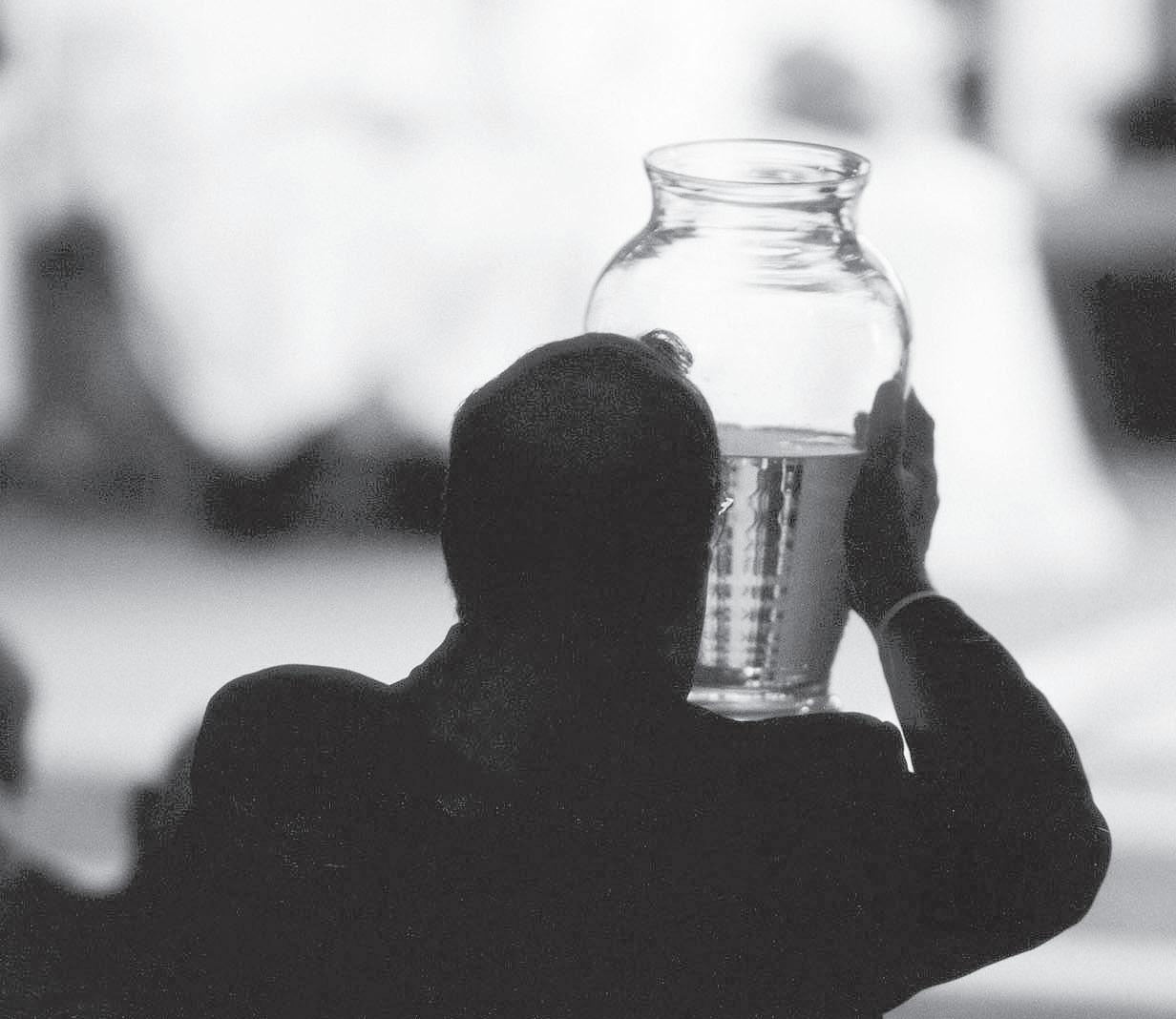
Romania blossoms after repressions
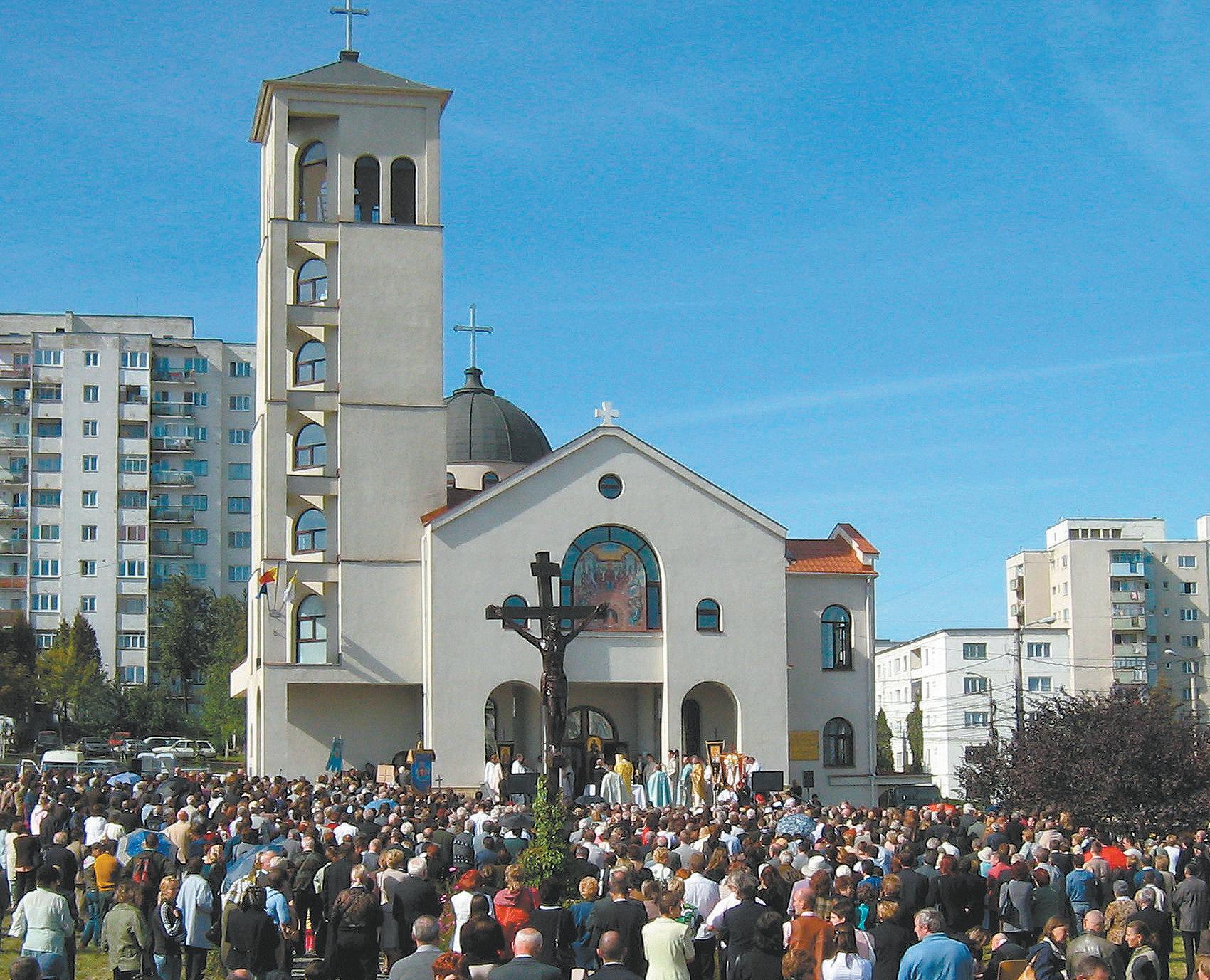
CNS correspondent Victor Gaetan traveled to Bulgaria, Moldova, Romania and Ukraine to explore Catholic communities that struggled through decades of Communist persecution and are now witnessing meaningful revivals.
■ By Victor GaetanThe Romanian Catholic Church, an Eastern rite suppressed under communism, is experiencing a revival.
In December 2005, Pope Benedict XVI elevated its status to a major archbishopric, granting it greater autonomy.
This December, two young bishops were installed as auxiliaries for the Archdiocese of Fagaras and Alba Iulia, which includes the capital, Bucharest. Auxiliary Bishops Mihai Fratila, 37, and Vasile Bizau, 38, were installed Dec. 16.
“The Greek Catholic church is going on and on and growing up,” Bishop Florentin Crihalmeanu of Cluj told Catholic News Service.
“The Lord is with us. People keep
coming back, more every month. Our church witnesses so many miracles, despite the many obstacles.”
In September, when Bishop Crihalmeanu, 48, consecrated Descent of the Holy Spirit Church, 2,000 people thronged the square outside the new building. The church is one of the few new buildings in a country where Eastern Catholics, sometimes referred to as Greek Catholics, have fought for return of property expropriated under the communist regimes.
In 1948, one of the Communist Party’s first acts of aggression against Romanian culture and religion was to transfer the Romanian Catholic Church’s 1.5 million members to the Orthodox church. Communist officials arrested its bishops, confiscated its property - including four cathedrals - for use by the state or gave the property to the Orthodox church.
“All Greek Catholic bishops were arrested and put in a villa surrounded with barbed wire,” Bishop Crihalmeanu said. “In 1950, they were transferred to a notoriously severe prison where they were put, like Christ, among common criminals. It was the Greek Catholic church’s Passion week, but the week lasted for 42 years.”
Four of the bishops arrested in 1948 died in jail; two were released to house arrest and died there. Six new bishops, consecrated clandes-
tinely, took their places.
Bishop Crihalmeanu said he studied theology in secret as the student of an older priest.
“If the secret police found theological writings about (the) Greeek Catholic Church in your possession it was a matter of prison, so everything was very secretive,” he said.
“The ‘seminary’ was at a priest’s house, and we developed an eleborate system of entering the building to avoid detection.”
“I was working as a mechanical engineer from 7 (a.m.) to 3 p.m., then going to this seminary from 4 to 8 p.m. All the students were working as well,” and some traveled up to 35 miles for classes, he said.
He was ordained a priest Sept. 9, 1990, in a ceremony held outside as a sign of protest against “the ongoing state and Orthodox possession of our property.”
“Greek Catholics had so many churches in this city and in surrounding villages, but by fall 1990, although a sort of democratic revolution had occurred, we were not getting them back,” he said.
Since 1990, the Romanian Catholic Church has reopened six seminaries and more than a dozen primary and secondary schools.
In January 1997, Bishop Crihalmeanu was one of 12 bishops ordained by Pope John Paul II in St. Peter’s Basilica.
“It was a sign of recognition of
our loyalty to the church through the dark years of communism,” he said.
Bishop Crihalmeanu said he does not blame the Orthodox church for the property disputes.
“The Romanian Orthodox Church is our sister, and she is not the one who confiscated these goods. It was the Romanian state,” he said.
“If the secret police found theological writings about (the) Greek Catholic church in your possession it was a matter of prison, so everything was very secretive. The ‘seminary’ was at a priest’s house, and we developed an elaborate system of entering the building to avoid detection,” he said.
“But certainly, we face many, many obstacles at the local level, in the villages especially. We tell the Orthodox, ‘We don’t want (to take) your faithful.’ We want people to have the option of saying ‘I want to return to my confession.’ Let the people themselves - who were Greek Catholics but were forced to participate in Orthodox faith communities if they wanted to continue active worship or bury their relatives as Christians - let them decide, not the Orthodox priests or the
police,” he said. “Especially in small villages, the Orthodox priests are very strong.
“I try to understand them by seeing the situation through their eyes,” said Bishop Crihalmeanu.
“The number of faithful in their church represents money. No faithful, no money. They try to keep their faithful in order to keep their income. If they don’t have a certain number of parishioners, they suffer. Priests don’t have large salaries. It’s understandable.”
Despite high-level agreements between the Orthodox and Eastern Catholic hierarchies committing both sides to tolerance and good faith, local Orthodox priests sometimes prevent the Eastern Catholics from using churches that used to belong to Catholics.
“It’s a very complex problem, but it is all right. It is interesting. The church is going on despite these problems, and we are very optimistic,” Bishop Crihalmeanu said.
He added: “Despite 42 years of oppression, the Greek Catholic conscience did not disappear in our country.
“There are places where the faithful came back to our church together with the building. We need only prayers.
“Knowing that others are praying for us is the very best thing in these times.”
He’s 80? No worries
Pope’s 2008 calendar confirms life doesn’t slow down after 80
■ By John ThavisAs Pope Benedict XVI looks at his 2008 calendar, he’s no doubt recognising that life doesn’t slow down after 80.
With three foreign trips, a world Synod of Bishops on the Bible, a jubilee year dedicated to St Paul, an important dialogue with Muslims and an encyclical and a new book in the works, 2008 is shaping up as perhaps the busiest year of his pontificate.
The Pope will celebrate his 81st birthday in Washington on April 16, the day he’s scheduled to meet with US President George W Bush at the White House and with US bishops at the Basilica of the National Shrine of the Immaculate Conception. There’s bound to be a birthday cake somewhere along the way.
The April 15-20 trip to the United States and the United Nations will be the Pope’s first journey outside Italy in 2008.
In Washington, the pope also is expected to say Mass in the Nationals’ baseball stadium and hold meetings with educators and interreligious leaders.
In New York, in addition to his UN visit, the Pope’s tentative schedule includes a meeting with ecumenical representatives, Mass in St Patrick’s Cathedral, an encounter with seminarians, a visit to Ground Zero (the site of the September 11, 2001 terrorist attacks on the Twin Towers) and Mass in Yankee Stadium. In late July the Pope will travel to Australia - by far the longest trip of his pontificate - to preside over World Youth Day celebrations. Sometime during the year, he’s expected to visit Lourdes, France, to mark the 150th anniversary of Marian apparitions there. Meanwhile, the Pope also has made plans for several major trips inside Italy, beginning with the Ligurian seaports of Genoa and Savona in mid-May. In Savona, which hasn’t hosted a Pope since 1815, the announcement of the Pope’s visit was frontpage news. In mid-June, the pope will visit the southern Italian region of Puglia, and in early September will make a one-day stop on the island of Sardinia.
On June 28, Pope Benedict plans to inaugurate the “year of St Paul,” which will feature liturgies, conferences and ecumenical
encounters in Rome and around the world.
The Pope wants modern Christians to draw inspiration from the apostle’s missionary energy, and that’s a theme he’ll be talking about in coming months.
The Synod of Bishops runs from October 5-26 on the theme, “The Word of God in the Life and Mission of the Church.” The Pope chose the topic of Scripture, and he is expected to follow the proceedings closely. The synod’s working document is due out earlier in the year. The Pope is himself working on at least one document, a new encyclical that addresses social issues. There’s no target date, but officials expect it during the first half of 2008. Sources say the Pope is continuing to work on another project dear to his heart: the second volume on the life of Jesus, following publication of “Jesus of Nazareth” last spring.
Day to day in 2008, much of the Pope’s time will be taken up by rounds of “ad limina” visits made by heads of dioceses, audiences with world leaders and speeches to ambassadors. He’ll welcome Mary Ann Glendon as the new ambassador of the United States, as well as new representatives from Israel and Iran.
In early January, the Jesuits are gathering to elect a new Superior General. The Pope will meet with delegates of the order and their new leader in February.
In ecumenical affairs, 2008 marks the 100th anniversary of the Week of Prayer for Christian Unity, and the Pope is expected to preside over a prayer service marking the centenary. Muslim representatives are coming to the Vatican early in 2008 to lay the groundwork for a potentially important dialogue with the Vatican. The Pope had invited a group of Muslim scholars to meet with him and with the Pontifical Council for Interreligious Dialogue. Other Vatican agencies will be hosting important meetings during the year. The Pontifical Council for Justice and Peace has proposed a series of international conferences on social development issues such as poverty, corruption, disarmament, prisons and the ethics of taxation.
Sometime early in the year, the Pontifical Commission “Ecclesia Dei” plans to issue a document clarifying questions that have arisen regarding the Pope’s 2007 document relaxing restrictions on use of the Tridentine Mass. Sources said the pope personally is interested in removing ambiguities, and will sign off on the new document.
In April, Pope Benedict’s pontificate enters its fourth year. He gradually has replaced
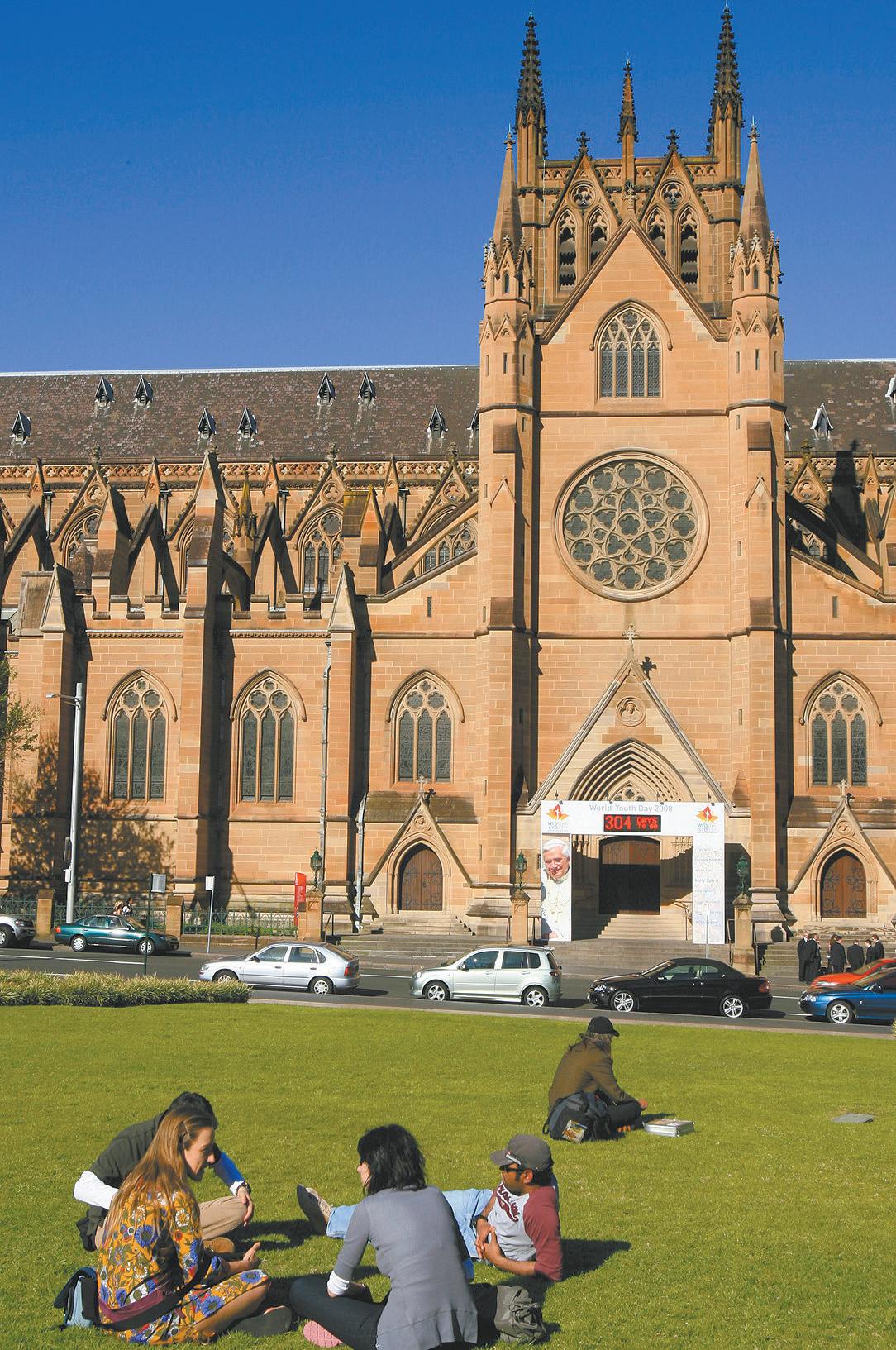
top aides, and that’s bound to continue. Six Roman Curia heads are already at the normal retirement age of 75 or will reach it in 2008.
They include Nigerian Cardinal Francis Arinze, head of the Congregation for Divine Worship and the Sacraments, Portuguese
After 50 years, Vatican’s astronomers move into a convent■ By Carol Glatz
Aftermore than half a century based at the papal palace in Castel Gandolfo, the Vatican’s astronomers will be moving to bigger, more modern facilities.
The astronomers’ new offices and residences still will be located on the grounds of the papal summer residence in the hill town of Castel Gandolfo, about 15 miles south of Rome, but they will be in a completely renovated convent nestled in the papal gardens.
“This is going to be a great improvement” for carrying out the astronomers’ work and studies and the new residences “will be a whole lot more comfortable,” said US Jesuit Brother Guy Consolmagno. Work has not yet begun on the new headquarters, so the relocation is not likely to occur before next fall, he said.
While the papal palace, where the observatory and two powerful telescopes are located, is “a beautiful, historical building” dating back to the 1500s, “it’s also freezing in the wintertime and too hot in the summer,” the Vatican astronomer told Catholic News Service Dec. 21.
The Jesuit community that works there can number up to 14 people in the summer months, but the facility only has one shower, he said.
Vatican officials had been considering moving the Jesuit astronomers out of the papal residence for several years, said a statement by the Jesuit curia earlier this year.
“The needs of papal quarters, where large crowds gather for audiences and where dignitaries visit the pope even in summer, are not easily combined with a residence for Jesuits engaged in study, teaching and research,” it said. The Jesuits have been entrusted with the Vatican Observatory since 1935, when Pope Pius XI decided to move the observatory from the Tower of the Winds not far from the papal apartment in the Vatican to the papal summer residence in Castel Gandolfo. This newest plan to relocate within Castel Gandolfo had some speculating that Jesuit stargazers were being “kicked out,” as one Italian newspaper headline reported. The Jesuits and Brother Consolmagno disagreed. The Jesuit brother said the enormous effort the Vatican is putting into planning and renovating the new facilities is “a sign of just how much they’re
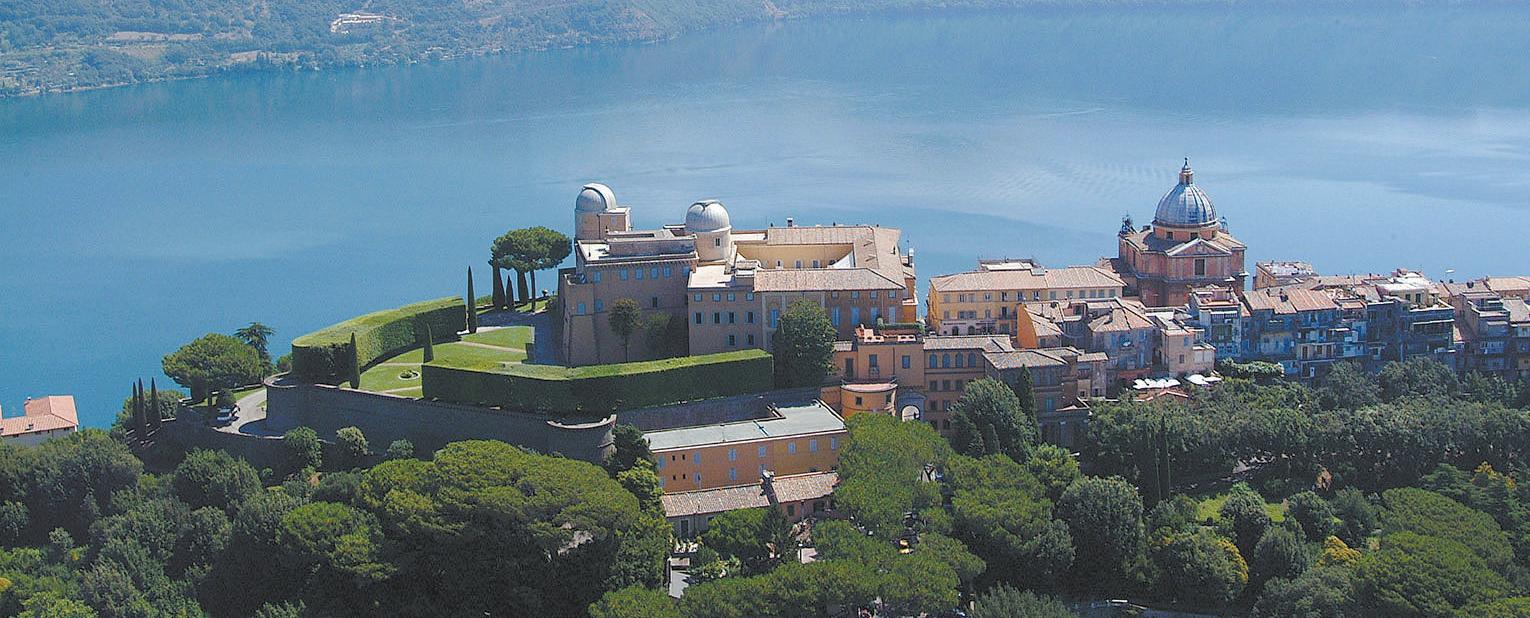
supporting our continued presence here.” The Jesuits said in their statement that giving the astronomers a new headquarters is “a confirmation of the importance attributed by the Holy Father to the work being carried out” by them.
The Vatican astronomers’ new facilities will cover two stories with residences on one floor and, on the bottom floor, brand new offices, laboratories, a museum, a library, a large classroom for their sum-
mer school program and additional space for the summer students’ use.
“We’re all pretty happy with the way they’ve planned things out,” Brother Consolmagno said.
He said after they move to their new quarters they will still have access to the two large telescopes located on the roof of the papal palace as well as access to some adjoining rooms and an office. He said the telescopes are not used very often in the summer while the Pope is there
as “the nights are short,” giving astronomers reduced viewing time. The Vatican Observatory’s Zeiss refractor telescope, built in 1935, is in for a face-lift. Br Consolmagno told Florida’s Orlando Sentinel that the Jesuit astronomers have invited Nate Lust, a recent astronomy graduate of the University of Central Florida, to help them see if he can rescue “some beautiful old telescopes with some cutting-edge technology.”
PANORAMA a roundup of events in the archdiocese
Panoramas
Panorama entries must be in by 5pm Monday. Contributions may be faxed to 9227 7087, emailed to administration@therecord.com.au or mailed to PO box 75, Leederville, WA 6902.
Submissions over 55 words will be edited. Inclusion is limited to 4 weeks. Events charging over $10 constitute a classified event, and will be charged accordingly. The Record reserves the right to decline or modify any advertisment. Please do not re-submit Panoramas once they are in print.
First Friday January 4
ALLIANCE AND TRIUMPH OF THE TWO HEARTS
Holy Mass and Eucharistic Vigil at St Bernadette’s Church Glendalough. Confessions at 5.15pm. Parish Mass at 5.45pm (Celebrant: Fr Doug Harris) followed by exposition of the Blessed Sacrament, hourly Rosaries, hymns and reflections etc. Vigil concludes with midnight Mass in honour of the BVM (Celebrant: Fr Doug Harris). Enq: Fr Doug Harris 9444 6131 or Dorothy 9342 5845.
Saturday January 5
DAY WITH MARY
St Mary Star of the Sea Church, Cnr Stirling Highway & McNeil Street, Cottesloe. 9am to 5pm. A video on Fatima will be shown at 9am. A day of prayer and instruction based on the messages of Fatima. Includes Sacrament of Penance, Holy Mass, Eucharistic Adoration, Sermons, Rosaries, Procession of the Blessed Sacrament and Stations of the Cross. Please BYO lunch. Enq: Franciscan Sisters of the Immaculate 9250 8286.
Sunday January 6
DIVINE MERCY
An afternoon with Jesus and Mary will be held at St Joachim’s Church, on the corner of Shepperton Road and Harper Street in Victoria Park. Starting at 1.30pm. Program: Holy Rosary and Reconciliation, Sermon: by Fr Dominic Mary, FFI on “The Three Wise Men” followed by Divine Mercy prayers and Benediction. Afterwards refreshments in the parish hall, followed by a video/DVD with Fr John Corapi – ‘Questions & Answers’. Enq: John 9457 7771 or Linda 9275 6608.
Sunday to Saturday January 6 to 12
THE SUMMER SCHOOL OF EVANGELISATION 2008
Is a unique week long Retreat and formation experience that will set hearts on fire. Open to everyone over 16yo and is the ideal preparation for World Youth Day. Night rallies open to the public. 67 Howe St, Osborne Park. See http://sse2008.disciplesofjesus.org/ for brochure/registration or Enq: 0401 692 690.
January 17 to 21
ARISE CONGRESS
A Trumpet Call for a Joshua Generation - John 23rd College, John 23rd Ave, Claremont. Speaker: Archbishop Hickey. Derek Williams. Scott Kaldahl. Eddie Russell. David Harp. 7.30pm EACH EVENING
Thursday January 17 to 20. ALL the evening sessions FREE entry. A Love Offering will be received each night to cover costs. Daytime Sessions Saturday and Sunday Registrations Only. Saturday Jan 19 -10am - 12 noon - 2.30pm - 4.30pm. Sunday Jan 20 - 9am MASS (Free) - 11am - 2pm - 4.30pm. Enq: FMI 08 9382 3668 Email: Arise@flameministries.org Web Info: www.flameministries.org/joshua-arise.htm. Program - SEE ADVERT THIS EDITION
Wednesday January 23
CARITAS AUSTRALIA PROJECT COMPASSION 2008
PARISH REPRESENTATIVES COMMISSIONING & INFORMATION SEMINAR
Morning 9.30am – 11.30am OR Evening 6.30pm – 8.30pm, Catholic Pastoral Centre Seminar Room, 40A Mary St Highgate (Parking off Harold St), light refreshments provided.
Saturday February 2
HOLY TRINITY CHURCH, EMBLETON
Novena to Our Lady of Lourdes commences. Starting at 6pm Vigil Mass followed by Novena devotions, Benediction, hoisting of the Banner of Our Lady of Lourdes. Welcome get together for Father Hugh Thomas-CSsR the Preacher. Please bring a Plate. February 3rd and 4th, blessing of children and anointing of the sick respectively.
Monday February 11, Feast Day. 7pm Holy Mass followed by candle light procession to the Grotto. After the closing ceremony there will be a farewell get together for Father Hugh Thomas. Please bring a Plate. Enq: Mgr P McCrann 9271 5528 or George Jacob 9272 1379.
Sunday February 10
ST CATHERINE‚S CATHOLIC CHURCH, GINGIN
FEAST OF OUR LADY OF LOURDES
Programme: 12 noon BYO lunch, 1pm - Holy Rosary, Exposition, Hymns, Benediction and Blessing of the
Sick. 1.30pm Marian Procession. 2.30pm Holy Mass at the Grotto. 3.30pm Afternoon tea provided. To book on the coach, phone Francis Williams 9459 3873 or Mob 0404 893 877. Transport cost $15.00 per person (Return). BYO Lunch. Enq: Sheila 9575 4023 or Fr Paul 9571 1839.
PERPETUAL ADORATION OF THE BLESSED SACRAMENT
Is in its fifth year at Christ the King Church, Lefroy Road, Beaconsfield. 24 hours per day, except at Mass times. All are invited to spend an hour with Jesus truly present. Entrance is from the porch, near the altar on the Lefroy Road side of the church. Enq: Joe 9319 1169.
First Sunday of Every Month
HEALING FIRE BURNING LOVE MINISTRY
Celebrates the Sunday Mass at St Bernadette’s Church, Cnr Jugan and Leeder Streets, Glendalough commencing with praise and worship at 6.30pm and Mass at 7pm. We have healing prayers after the Mass so please invite all those in need of the healing love and power of Jesus. Enq: Jenni Young 9445 1028 or 0404 389 679.
Every First Friday of the Month
Mass 7.30pm honouring St Pio of Pietrlcina with his Novena to the Sacred Heart and Prayer of Union. St Joseph’s Parish, 20 Hamilton Street, Bassendean. Join in every First Friday.
Third Sunday of the Month
OBLATES OF ST BENEDICT MEET
Venue: St Josephs Convent, York Street, South Perth at 2pm. An annual Retreat is held at New Norcia, Trinity Sunday Weekend. Oblates are affiliated with Benedictine Abbey New Norcia. We celebrate our 50th Anniversary September 2008. A golden celebration. All welcome. Vespers and afternoon tea conclude monthly meeting. Enq: Secretary 9388 3026.
Every Tuesday
WEEKLY PRAYER MARY’S COMPANION WAYFARERS OF JESUS THE WAY
Starting at 7pm at St Mary’s Cathedral Parish Centre, 450 Hay Street, Perth. Appreciate the heritage of the Faith united with others asking Jesus and Mary to overcome burdens in life. Receive healing in prayer through the Rosary, Scripture, meditation and praise in song. Followed by friendship and refreshments. Prayer is powerful. Come join us!
First Friday and first Saturday of each month
COMMUNION OF REPARATION ALL NIGHT VIGIL
Corpus Christi Church, Mosman Park 7pm-1am, 46 Lochee Rd, Mosman Park. Mass, Rosary, Prayers, Confessions and silent adoration. Contact: Catalina 0439 931 151.
First Sunday of each month
DEVOTIONS IN HONOUR OF THE DIVINE MERCY
The Santa Clara Parish community welcomes anyone from surrounding parishes and beyond to Santa Clara Church, cnr of Coolgardie and Pollack Sts, Bentley. The afternoon commences with the 3 o’clock prayers, followed by the Divine Mercy Chaplet, reflection and concludes with Benediction.
Every Saturday
PERPETUAL HELP DEVOTIONS
4.30pm. The half hour perpetual novena devotions to the Mother of Perpetual Help continue each Saturday at the Redemptorist Monastery Church, 190 Vincent St, in North Perth. Reconciliation available before and after the devotions. All welcome.
Every Sunday
BULLSBROOK SHRINE
Sunday pilgrim Mass is celebrated with Holy Rosary and Benediction of the Blessed Sacrament 2pm at the Shrine of the Virgin of the Revelation, 36 Chittering Road, Bullsbrook. Reconciliation is available in Italian and English before every celebration. Enq: 9447 3292.
BOOK DONATIONS WANTED
We are seeking donations of Catholic books, Bibles, Missals and Divine Office books any age, any condition. Tel: 9293 3092.
Every First Friday
HOLY HOUR FOR VOCATIONS TO THE PRIESTHOOD AND THE RELIGIOUS LIFE
At Little Sisters of the Poor Chapel, 2 Rawlins Street, Glendalough. 7pm Mass with celebrant Fr Albert Saminedi. 7.30pm Holy Hour Adoration with Fr Don Kettle. Refreshments to follow in the hall. All welcome.
Second Friday of each Month
GENERAL PRAYER ASSEMBLY
The Couples for Christ and its Family Ministries welcome all members who now reside or are visiting Perth to join the community in our monthly general prayer assembly 7.30pm, St Joachim Parish Hall, Shepperton Road, Victoria Park. Enquiries: Tony and Dolly Haber (08) 9440 4540.
Every Fourth Sunday SECULAR FRANCISCAN ORDER
The Perth Fraternity of the Secular Franciscan Order assembles every fourth Sunday at 2.30pm in the Chapel of RSL Care, 51 Alexander Dr, Menora. Enquiries John 9385 5649.
Every Fourth Sunday WATCH AND PRAY
A Holy Hour is held at Infant Jesus Parish, Morley from 2-3pm with exposition of the Blessed Sacrament. The hour consists of some prayers and Scripture but mostly the hour is silent prayer for Vocations. All are welcome. Please encourage others to come and pray. Prayer - it works! Enq: 9276 8500.
CALL FOR VOLUNTEERS
Ignatian Volunteers Australia calls for part-time volunteers to respond to the needs of people in the community who live in marginalised circumstances. At the heart of this program is a reflective process based on Gospel values, which supports the volunteers in their work. To learn more: www.volunteers.jesuit.org.au Contact Kevin Wringe, Perth Coordinator (08) 9316 3469 kwringe@iinet.net.au .
Every First and Third Monday of the Month
ST TERESIAN PRAYER GROUP
The St Teresian Prayer Group meets every 1st and 3rd Monday of the Month, 7pm at Infant Jesus, Morley. Enq: Darren Miranda 9276 6358 after 1pm.
Every Third Saturday of the Month
PRAYER FOR LIFE
Father Jim Shelton leads prayers from 10am to 11am at Abortion Clinic in Rivervale. All welcome. Enq 9279 1549 or 9403 2444.
Every Tuesday
THE GOSPEL OF ST MATTHEW
Exciting revelations into the Gospel of St Matthew are being offered in a free of charge Bible course being conducted by Fr Douglas Leslie Rowe S.F.P. at St Joachim’s Parish Hall, Shepperton Rd, Victoria Park. Participants will be introduced into an insightful exploration of this fascinating Gospel. The course will be held every Tuesday at 7.30pm. Light refreshments will follow. Please bring a friend.
N.O.W NIGHT OF WORSHIP
On the initiative of Fr Charles Waddell PP and the assistance of Flame Ministries International, a new and exciting service called “N.O.W” (Night of Worship) has begun at 7.15pm followed by Mass at 8pm every Sunday at St Thomas the Apostle Church corner of College Road & Melville Street, Claremont. “NOW” is aimed at attracting people back into the Church and to the Mass as well as attracting regular Mass goers both youth and families. Come and join us each Sunday for a new experience of dynamic and joyful worship.
Every Sunday
LATIN MASS
The Latin Mass according to the 1962 missal is offered every Sunday at Our Lady of Fatima, 10 Foss St, Palmyra at noon. All welcome.
PERPETUAL EUCHARISTIC ADORATION
A Christmas Invitation
Spend some time with Jesus on His birthday (and any other day!). St Anne’s Church, 11 Hehir St Belmont is open for Eucharistic Adoration 24 hours
every day. Enq: Sandra Robinson 9277 2872. Christmas Day Mass, 12.30pm; St Mary’s, Kalgoorlie, Wednesday 26 December, Mass – Public Holiday 9.30am.
First Friday of the Month
WITNESS FOR LIFE
Pro-Life Mass at St Brigid’s, Midland, 9.30am followed by Rosary, Procession and Prayer Vigil at Abortion Clinic, led by Franciscan Friars of the Immaculate. Enq: Helene 9403 2444.
First Saturday of the Month
WITNESS FOR LIFE
Pro-Life Mass at St Anne’s, Belmont, 8.30am, followed by Rosary and Procession and Prayer Vigil at Abortion Clinic, led by Fr Paul Carey SSC. Enq: Helene 9403 2444.
ETERNAL WORD TELEVISION NETWORK
Every Sunday, 1 - 2 pm on Access 31
Sunday January 6:
Sharing the Bible in depth / Frances Hogan, Irish Scripture scholar, discusses her series, For God So Loved the World, on the Gospel of St John, with Fr Mitch Pacwa [EWTN Live].
Wishing all viewers a very Happy New Year. Many thanks to those who have contributed to the 300 Club ($50 annual - $1 a week). We need more members if we are to keep going throughout 2008.
Please send donations
The Rosary Christian Tutorial Association, P.O. Box 1270, Booragoon 6954. Enq: 93302467


ACCOMMODATION
■ FAMILY/GROUP ACCOMMODATION
www.beachhouseperth.com Call 0400 292 100
■ TO LET
Mandurah furnished holiday apartment in resort complex, 3 brm, 2 bath. Phn 9381 3495 or email: valma7@bigpond.com
■ TO LET
Nollamara – Rm avail Feb $125 p/wk. Own bthrm. Close to amenities. Looking for independent and honest female. Enq: 0419 194 206.
BLINDS
■ BLINDS SPECIALIST
Call AARON for FREE quotes 0402 979 889.
BOOK REPAIRS
■ REPAIR YOUR LITURGICAL BOOKS
Leather restorations; 2ndhand Catholic books @ Tydewi Bindery: phn 9293 3092.
BUILDING TRADES
■ BRICK REPOINTING
Phone Nigel 9242 2952.
■ PERROTT PAINTING PTY LTD
For all your residential, commercial painting requirements. Phone Tom Perrott 9444 1200.
Classifieds
Classifieds: $3.30/line incl. GST 24 hour Hotline 9227 7778 Deadline: 12pm Monday
ADVERTISEMENTS
■ HEALTH AND WELLNESS
■ PICASSO PAINTING
Top service. Phone 0419 915 836, fax 9345 0505.
BUSINESS OFFER
■ BUSINESS OPPORTUNITY
Work from your own “Home Office” in Health and nutrition industry. PT or FT. Live and online Training provided. Visit www.dreamlife1.com
FURNITURE REMOVAL
■ ALL AREAS
Mike Murphy 0416 226 434.
GIFTS
Advent calendars, Nativity sets cards, candles, religious items for baptism, reconciliation, holy communion, confirmation. Exclusive range of gifts, handbags, fashion accessories and many more. Opening hours: 8am - 5.30pm Monday-Thursday; 8am-7pm Friday, 10am-3pm Saturday; 12pm-4pm Sunday. We offer personal shopper services too. OTTIMO, Shop 102 and Shop 107-108, Trinity Arcade, Terrace Level, Hay Street, Perth. Phone: 9322 4520.
HEALTH
■ DEMENTIA REMISSION
Do you, or your loved one, suffer Dementia. Get into Dementia Remission like me! http://www.wgrey.com. au/dm/index.htm or (02) 9971 8093
A New Sample Pack of wellness, weightloss, and energy products. Natural – free delivery & Followup Call 02 9807 5337
IMMIGRATION
■ MIGRATION TO AUSTRALIA
Guidance and visa processing for Skilled, Family or Study Visas . Call Michael Ring or Ajay Trehan Registered Migration Agent (MARN # 0212024)Phone: 02 8230 0290 email: michael.ring@bigpond. com
WANTED
Lady seeks female tvl companion 50 – 60’s. Interested in holiday to Italy in Sep/Oct 2008. Enq: 9276 5054.
RELIGIOUS PRODUCTS
■ CATHOLICS CORNER
Retailer of Catholic products specialising in gifts, cards and apparel for baptism, communion and confirmation. Ph: 9456 1777. Shop 12, 64-66 Bannister Road, Canning Vale. Open Mon-Sat.
■ RICH HARVEST YOUR CHRISTIAN
SHOP
Looking for Bibles, CDs, books, cards, gifts, statues, baptism/communion apparel, religious vestments, etc? Visit us at 39 Hulme Court (off McCoy St), Myree, 9329 9889 (after 10.30am Mon to Sat). We are here to serve.
■ KINLAR VESTMENTS
“modern meets
Oregon Catholics plan reconciliation
■ By Ed LangloisCatholics from western Oregon, who weathered the end of an archdiocesan bankruptcy and a $75 million reorganization in 2007, will be meeting in homes and parishes during Lent 2008 to focus on healing and reconciliation.
Parishioners from the Archdiocese of Portland will read and study the Sunday Scripture readings, share faith and daily struggles and work toward making matters right in their personal lives, homes, neighborhoods, churches and the archdiocese.
Catholics in the region have been occasionally gathering in recent years to pray for the healing and reconciliation of victims of clergy sexual abuse and everyone affected by the scandal.
The Lenten small groups will broaden that spiritual effort, seeking healing in all parts of life.
"We are not just talking about child abuse here, but reconciliation in families, in parishes
- anything that separates you from God," said Deacon Thomas Gornick, director of evangelization for the Portland Archdiocese.
"It's a time to come back and reconcile both those private sins and public sins that exist in our lives," he said.
Materials for the meetings come from a collaboration with the Archdiocese of Hartford, Conn. Since 1986, the Hartford Archdiocese has maintained one of the few diocesan offices that promotes and helps small Christian communities.
The office publishes Quest, a small-group study guide, three times a year. The booklets contain reflections and questions to help Catholics make connections between their faith and everyday life.
Marianist Brother Bob Moriarty, who has directed the Hartford office for small faith communities for 18 years, said the groups are "ordinary people helping each other to connect life and faith regularly."
Their function is not just to be nice small groups, he said, but to create a structure that will help the parish.
"The idea is to cultivate small Christian
communities as basic units for the parish, as part of a long-range plan to strengthen the life of the parish as a whole," he told the Catholic Sentinel, archdiocesan newspaper of Portland.
"In our experience, members of small Christian communities are among the most deeply invested in the life of the parish."
Brother Moriarty said the connection comes about because when people feel more of a sense of belonging they also take on more responsibility overall.
He said one way to get parishioners involved in a small group is by explaining that the groups are a kind of retreat, a slowing down, not just another task in their alreadyharried lives.
When Deacon Gornick was invited to speak at a stewardship conference in Hartford, he and Brother Moriarty spoke about the need for a rejuvenation in the Archdiocese of Portland, particularly after it emerged from bankruptcy.
One hope that Portland church officials have for the small-group sessions is that parishioners will seek the sacrament of rec-

onciliation. Parish reconciliation services will be planned in conjunction with the group meetings.
Each parish will have a coordinator for the small-group gatherings. Quest materials will be available in English and Spanish.
"Reconciliation is not about blame, punishment or retribution," said Deacon Gornick. "For Catholics it begins with God in baptism. Reconciliation is the work and gift of the Father," he added.
"God constantly reaches out to us to reconcile us to himself."
CNS
Name:
Address:
Suburb:
Postcode:
Telephone:



The Last Word
Message in bottle to a weary world
The hope offered by Christianity can transform the world, the Pope says in his second encyclical letter.
Imagine you are shipwrecked, all alone, on a desert island, emaciated by hunger, parched with thirst, mind reeling on account of your isolation from human company. You walk along the beach, searching the horizon. Something sparkling in the surf catches your eye. You hasten towards it and find a bottle, floating towards the shore, carefully corked to protect the message rolled up inside. You grab the bottle, open it and unfurl the handwritten scroll to read: “HELP ON WAY: 2MORROW SHIP”.
Suddenly, loneliness and despair are overcome by expectation, great interest in your rescuers, longing for salvation, and the hope to finally return home. No longer alone, you already feel protected by the affection of those coming to save you. Hope, like falling in love, transforms everything. All is bathed in a new light. Your world is changed by the arrival of the good news.
In an essay entitled Message in a Bottle, the Louisiana novelist and philosopher Walker Percy explained the difference between “information” and “news” with the shipwreck example. In Spe Salvi, Saved in Hope, Benedict XVI’s recent encyclical on Christian hope, he offers a deeper distinction by contrasting that which is merely “informative” with that which is “performative”. Like Percy’s “news”, Benedict’s use of the term “performative” emphasizes the efficacy of Christian hope.
Drawing from British philosopher of language JL Austin and his theory of “performative utterances”, Benedict proposes that Christians tend to under-appreciate the vitality of their own hope because of habituation, almost as though it were a drug whose effects wear off with time.
Due to such habituation, Christians can fail to appreciate the greatness of that in which they hope and therefore sometimes set their sights on a less lofty goal. In doing so, they miss the whole point of Jesus’ message.
They set their sights on salvation in this world rather than the next. To use the phrase made famous by political philosopher Eric Voegelin, they “immanentise the eschaton”. Hope in this world is no Christian hope.
Although primarily for bishops, Benedict addresses an audience much broader than the Catholic Church. In fact, Spe Salvi challenges nearly everyone on the planet, from agnostic secularists who set their sights on economic development and scientific progress to Marxist revolutionaries, and everyone in between, including Lutherans and neo-pagan environmentalists.
Dialogue with Lutherans
Indeed, perhaps Benedict’s most challenging, yet affectionate, critique regards the traditional Lutheran conception of hope more as a personal conviction than the possession of an objective proof. Benedict’s analysis addresses the

difficulty of translating a Greek word, hypostasis, used in the New Testament Letter to Hebrews.
It shows the deficiencies of the German word Feststehen, or standing firm in one’s own convictions, and the comparative advantages of the term “substance”, to express how Christian hope is rooted in objective faith and maintained with objective proof. Christian hope and faith regard something real already present within the believer, even an embryo of eternal life held inside oneself, already, now.
Pope Benedict thereby challenges a central issue for the dialogue among Catholics and Protestants. Is Christian faith just about one’s personal convictions? Is it merely one’s certainty that saves?
Or, is faith something objective, really held, to be performed through works, and received through sacraments that effectively convey the grace of salvation? Benedict responds: “Faith is not merely a personal reaching out towards things to come that are still totally absent: it gives us something.
It gives us even now something of the reality we are waiting for, and this present reality constitutes for us a ‘proof’ of the things that are still unseen. Faith draws the future into the present, so that it is no longer simply a ‘not yet’. The fact that this future exists changes the present; the present is touched by the future reality, and thus the things of the future spill over into those of the present and those of the present into those of the future.”
(Spe Salvi, 7)
Benedict refers to the Sudanese slave girl, Saint Josephine Bakhita, who, after being bought and sold among slave traders, brutally beaten and flogged, was bought by an Italian diplomat. Years later, after having been brought to Italy and having received the Christian faith,
Bakhita discovered that she now had a new master, the best one imaginable, one who waits for her with love. Once enslaved by those who saw her only for her utility, she was freed by faith in a loving God who promises eternal life.
Spe Salvi challenges nearly everyone on the planet, from agnostic secularists who set their sights on economic development and scientific progress to Marxist revolutionaries, and everyone in between, including Lutherans and neo-pagan environmentalists.
Benedict comments that some are not interested in Christian hope because of their lack of interest in the promise of Christian faith, namely, eternal life. For some, eternal life sounds like an endless continuation of this life, just more of the same.
For others, eternal life sounds like something foreign and difficult to imagine. Many would like a continuation of this life, but with a few improvements. With Spe Salvi, Benedict proposes a robust version of Christian hope in an eternal life that includes all of the best, all at once, and forever.
The hope of science
In advancing the objective of Christian hope, Benedict refers to the Magi who set out from Persia to the Holy Land in search of the newborn king of the Jews and found him lying in a crib at Bethlehem. A star guided the Magi. At the very moment in which they knelt to adore the baby as king, “astrology came to an end, because the stars were now moving in the orbit determined by Christ” (Spe Salvi, 5). Astrology was overcome and astronomy was set free.
For Benedict, the coming of Christ opens nature to scientific study. Nature is no longer governed by fate, senseless destiny, or pagan gods fighting among themselves.
For many pagans, the heavens determined human behavior. For some contemporary scientists, human beings are determined in their actions by the laws of nature, such as those propounded by moral and social Darwinism. But for Benedict, we are free because we live in a universe directed by a personal God, therefore, “reason, will, and love” govern the stars, not senseless fate or the blind laws of physics and genetic biology.
Referring to the God discovered by the Magi, Benedict writes: “And if we know this Person and he knows us, then truly the inexorable power of material elements no longer has the last word; we are not slaves of the universe and of its laws, we are free...
Heaven is not empty. Life is not a simple product of laws and the randomness of matter, but within everything and at the same time above everything, there is a personal will, there is a Spirit who in Jesus has revealed himself as Love.” (Spe Salvi, 5) Because of faith in a reasonable and loving God, the Christian is challenged to find meaning in nature through study
and scientific experimentation.
Science, therefore, is to serve the human being by achieving deeper understanding of nature and new techniques to better our life in this world.
Science should always serve the human being and should never be pursued at the price of destroying human life. Scientific progress is good in itself but inadequate and dissatisfying as an object of ultimate hope.
Those who set their hope on progress, whether scientific or economic, anything merely material, diminish their own humanity with their deficient desire for something so limited and thereby lay the groundwork for attacking the dignity of others.
For example, to pursue a new cure for diabetes by destroying human embryos would be to take advantage of one human for the sake of another. To cannibalise an embryo for the sake of medical treatment entails a depreciation of the value of all humans, even a kind of slavery. One person is expended for the sake of another.
Just as Christian faith is “performative”, so too the encyclical. One cannot read it and remain indifferent.
The shipwrecked man on the desert island has a choice to hide from the arriving rescue ship or to prepare and look forward to going back home. In the last analysis, however, the comparison fails.
The Christian is quite different from the shipwrecked man insofar as the Christian hope for salvation does not remove the believer from this world, but rather challenges the Christian to make this world better, while hoping in a prize beyond our wildest dreams.
Rev. Robert A. Gahl, Jr., is Associate Professor of Ethics at the Pontifical University of the Holy Cross in Rome.